You are not logged in.
- Topics: Active | Unanswered
#1 2014-10-12 15:12:08
- Ronen
- Member
- Registered: 2014-03-25
- Posts: 49
Kalanchoe and others in my collection
I decided to start posting photos of my plants, mainly the ones that are in flower, in the hopes that they might be interesting to you too. I'm not sure what is the correct way to post photos here, so would appreciate suggestions.
First Kalanchoe in flower this year - K. rotundifolia:
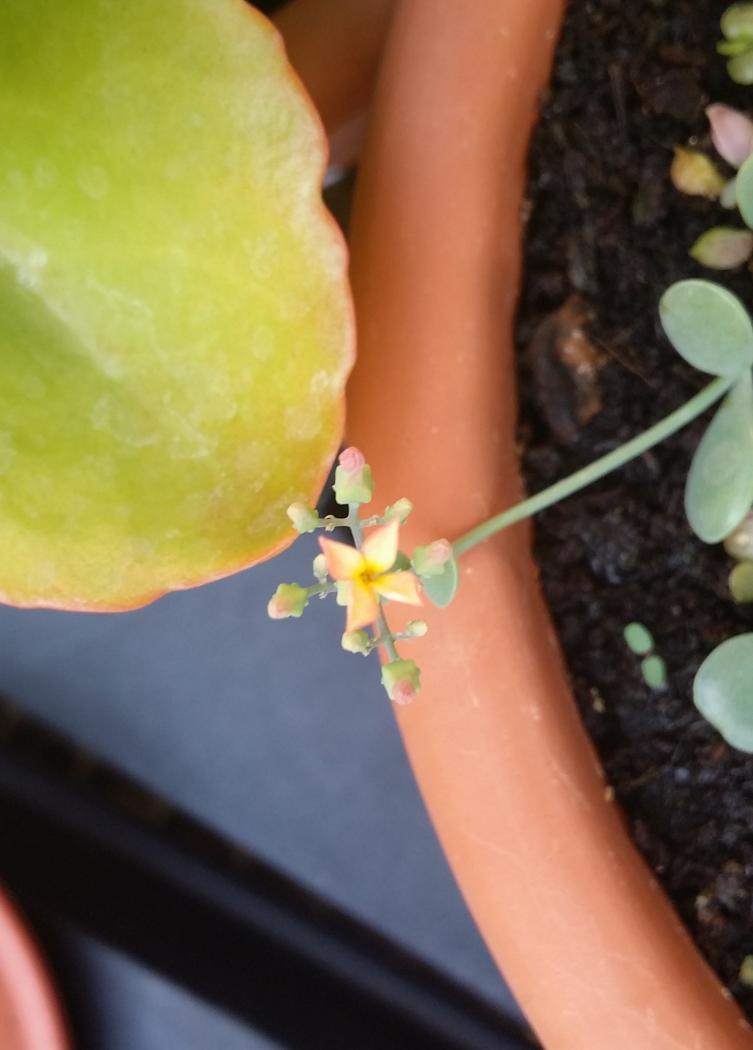
Next will probably be K. sexangularis:
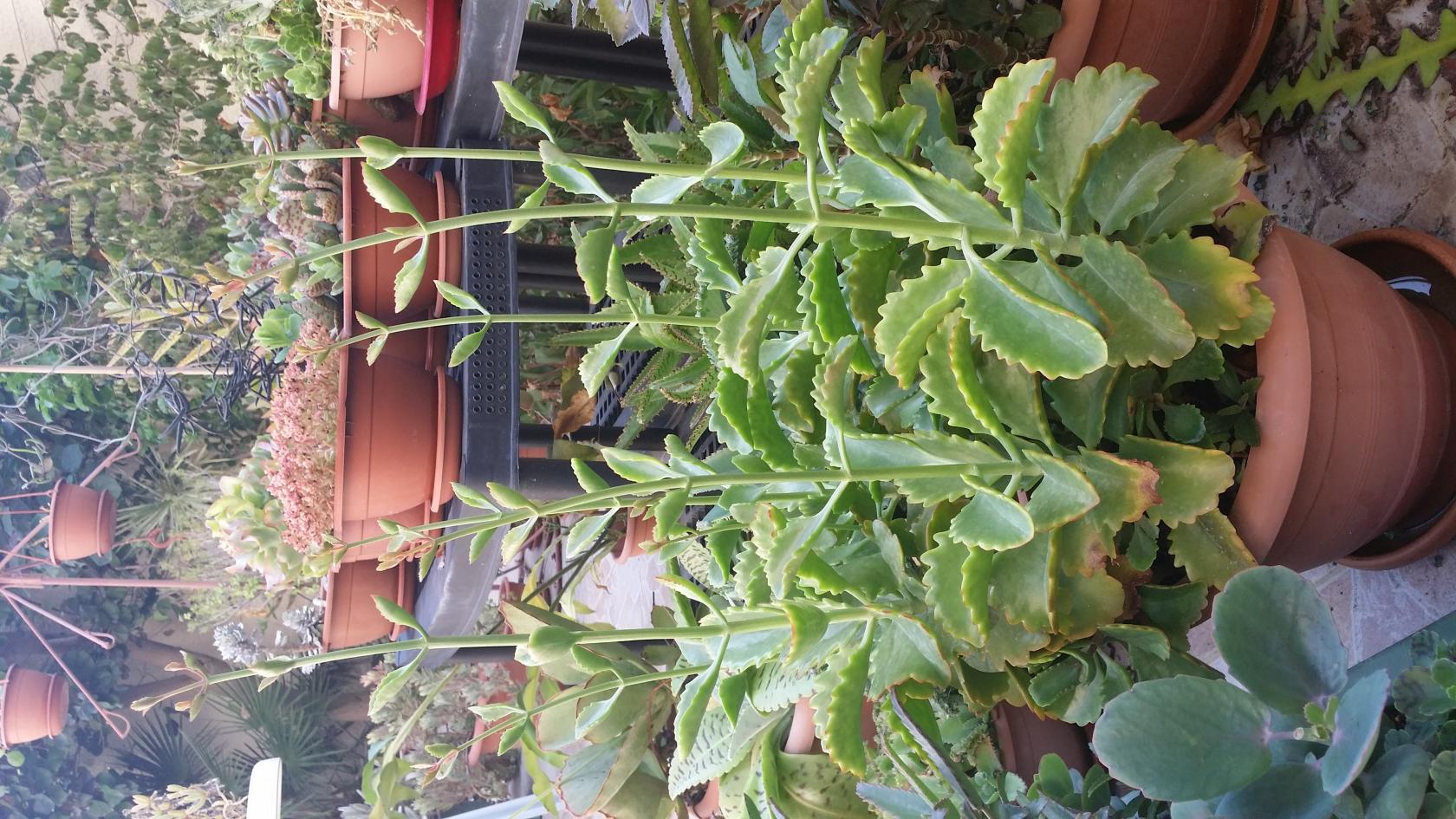
Or my hairless var of K. synsepala:
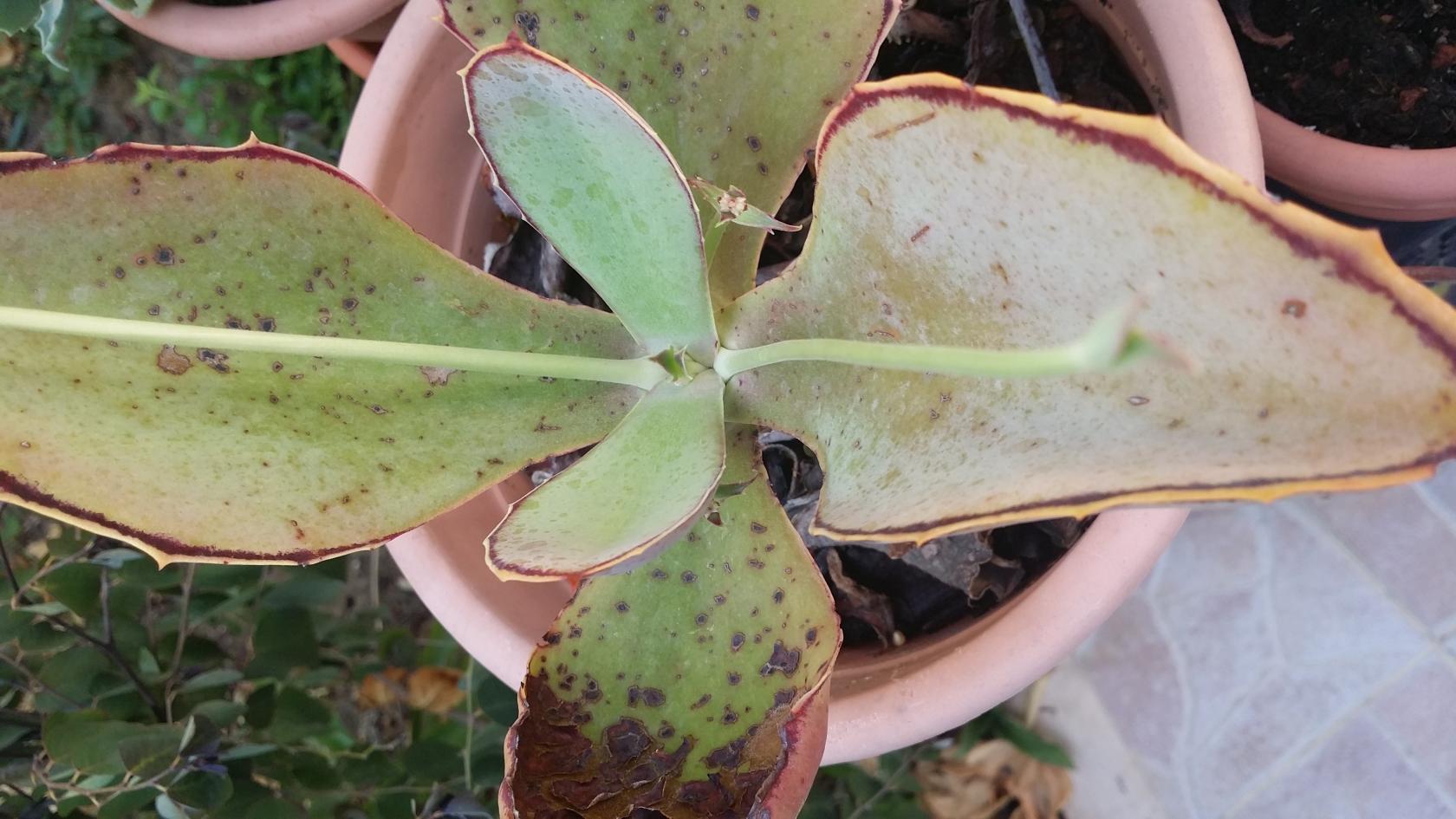
Also, K. rubella sensu Descoings (2003) got recently an interesting color on its leaves:
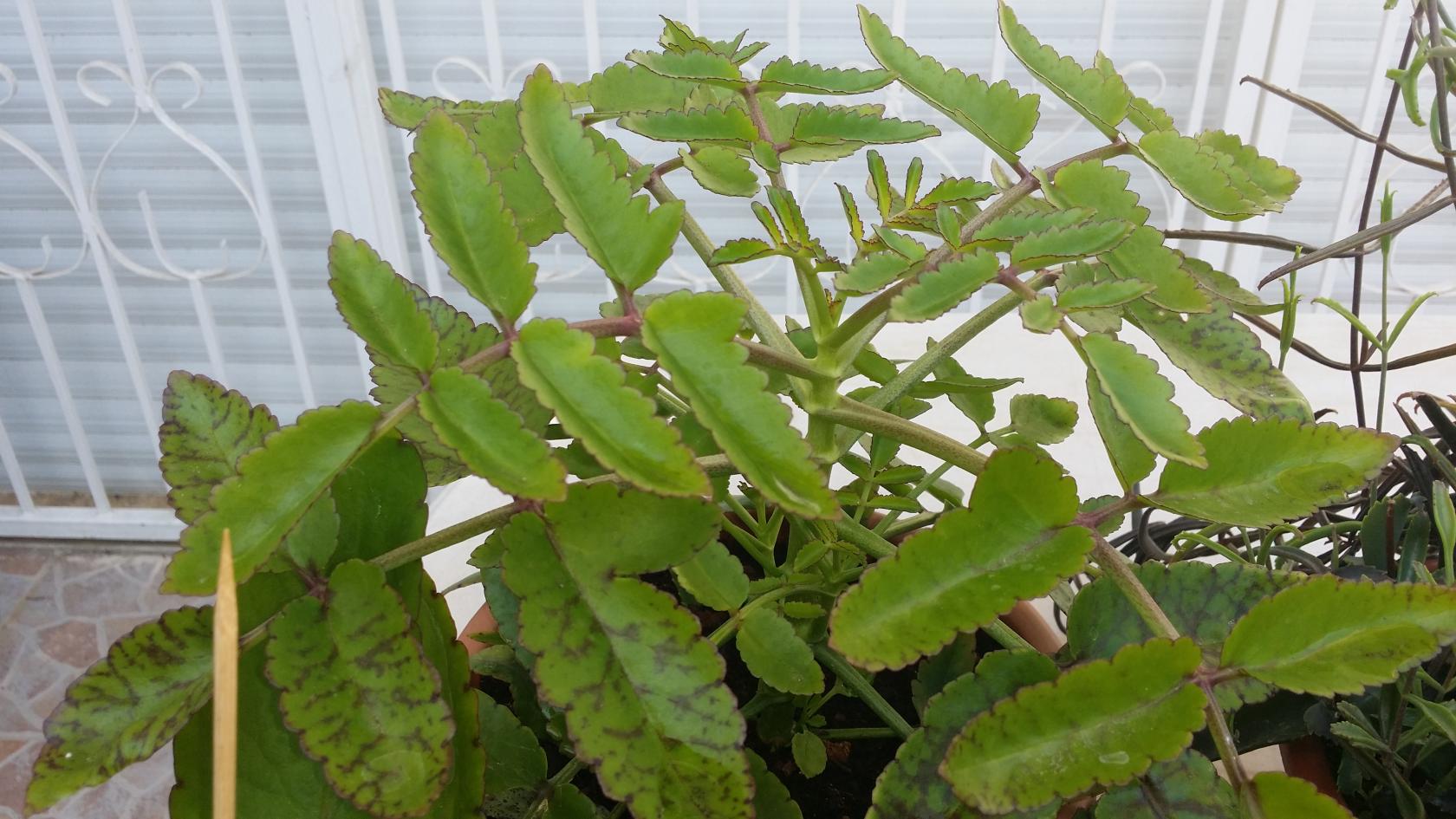
Offline
#2 2014-10-21 20:07:30
- margrit
- Administrator
- Registered: 2007-09-03
- Posts: 5,388
Re: Kalanchoe and others in my collection
Thank you, Ronen, for presenting your collection - hopefully you will keep us up-to-date !
I admit I have yet to see a hairy K. synsepala ....
Offline
#3 2014-10-22 14:42:31
- Ronen
- Member
- Registered: 2014-03-25
- Posts: 49
Re: Kalanchoe and others in my collection
Most Kalanchoe flower in my country after mid November, so there aren't many updates yet...
Below is a photo of the recently acquired hairy K. synsepala, and a leaf fragment cutting of it. The hair is not very visible - it is very dense and short, and this is why I shot at this weird angle. Sometimes, when the leaves are wet, they are even somewhat sticky because of the hair...
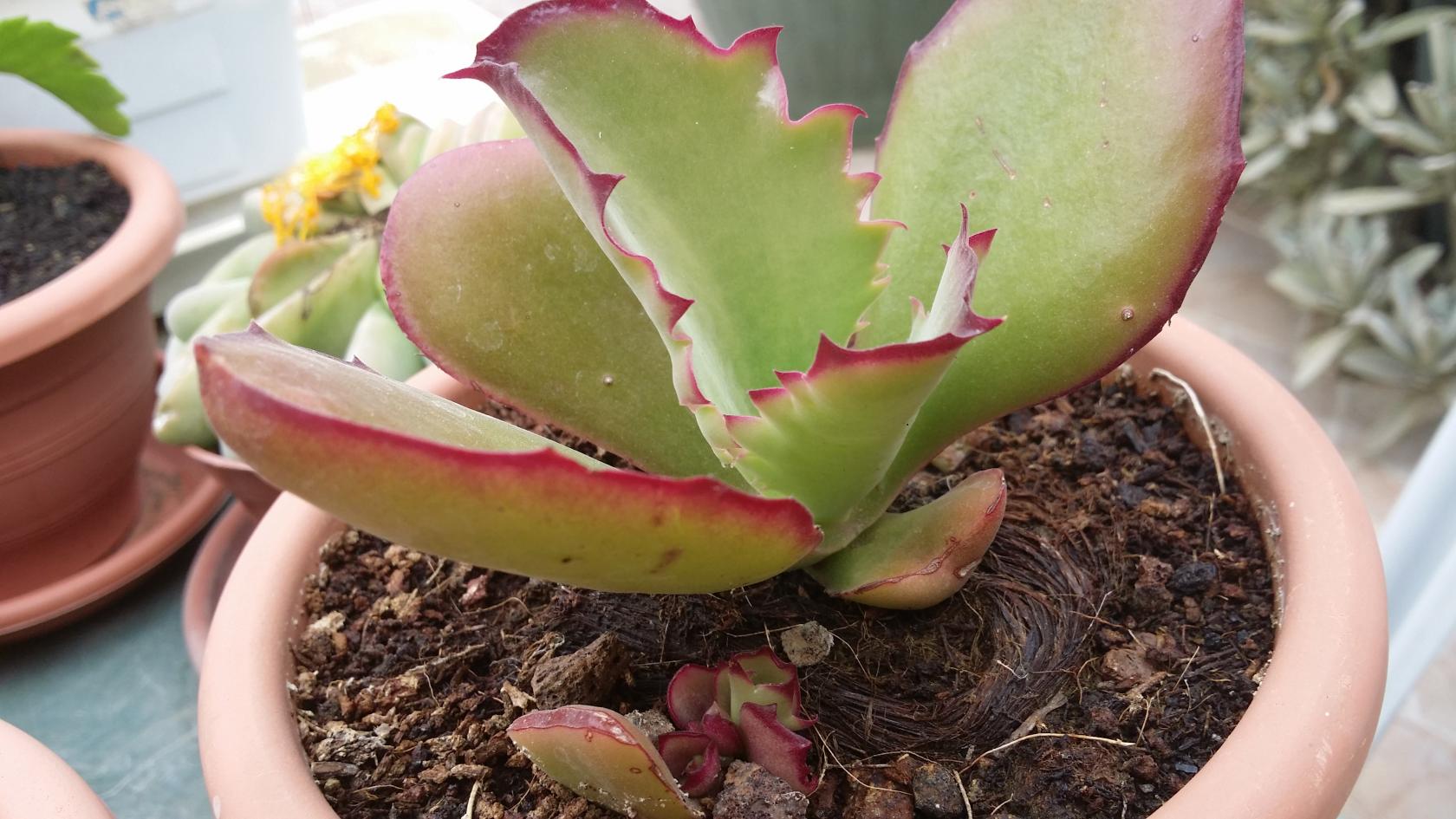
Below are K. laetivirens that prepare to flower. They are located on the western side of my house, while most other plants are on the eastern. K. laetivirens of the eastern side aren't even close to flower and are much bigger in size.
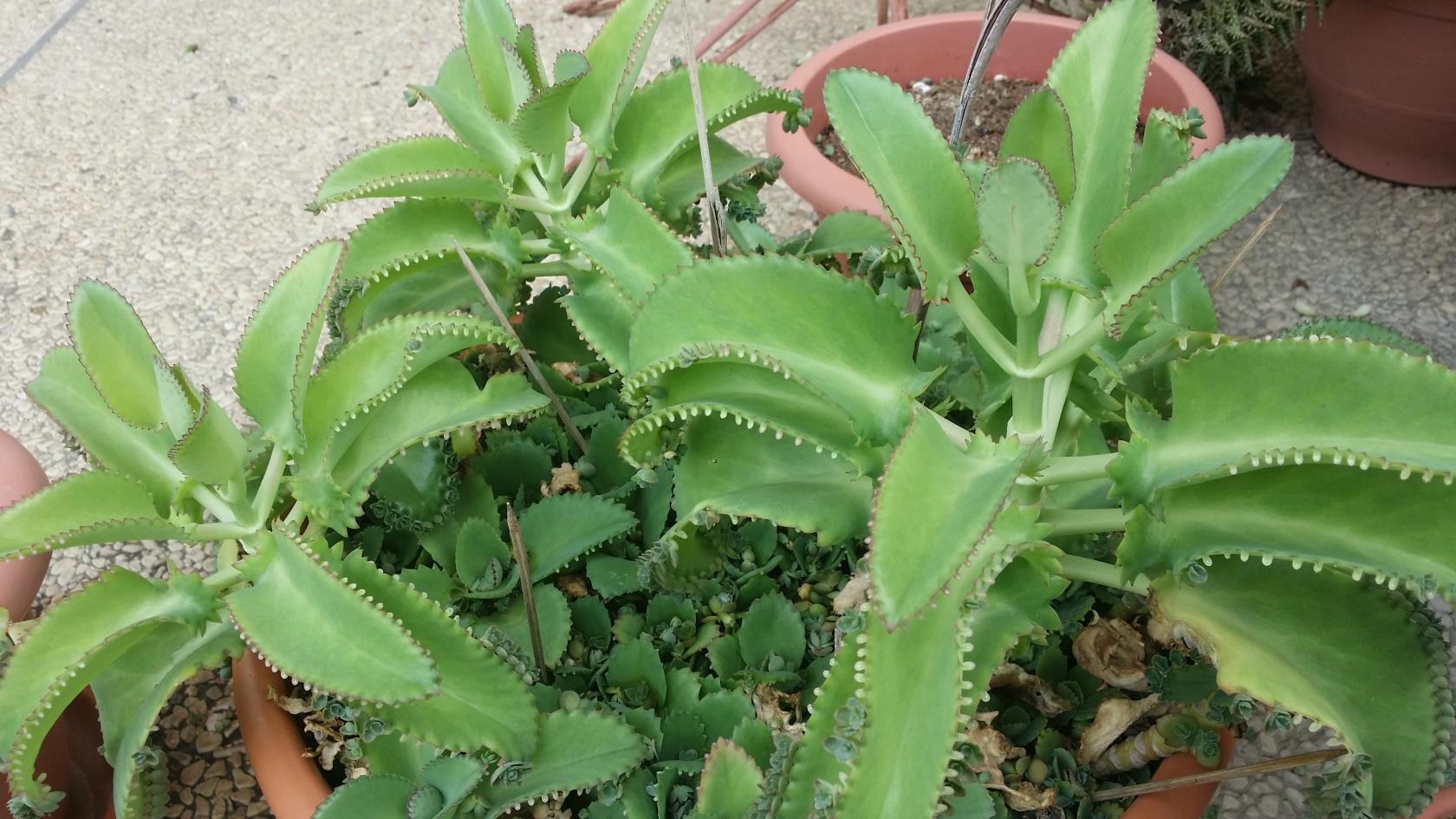
K. 'Rose Leaf' also prepares to flower:
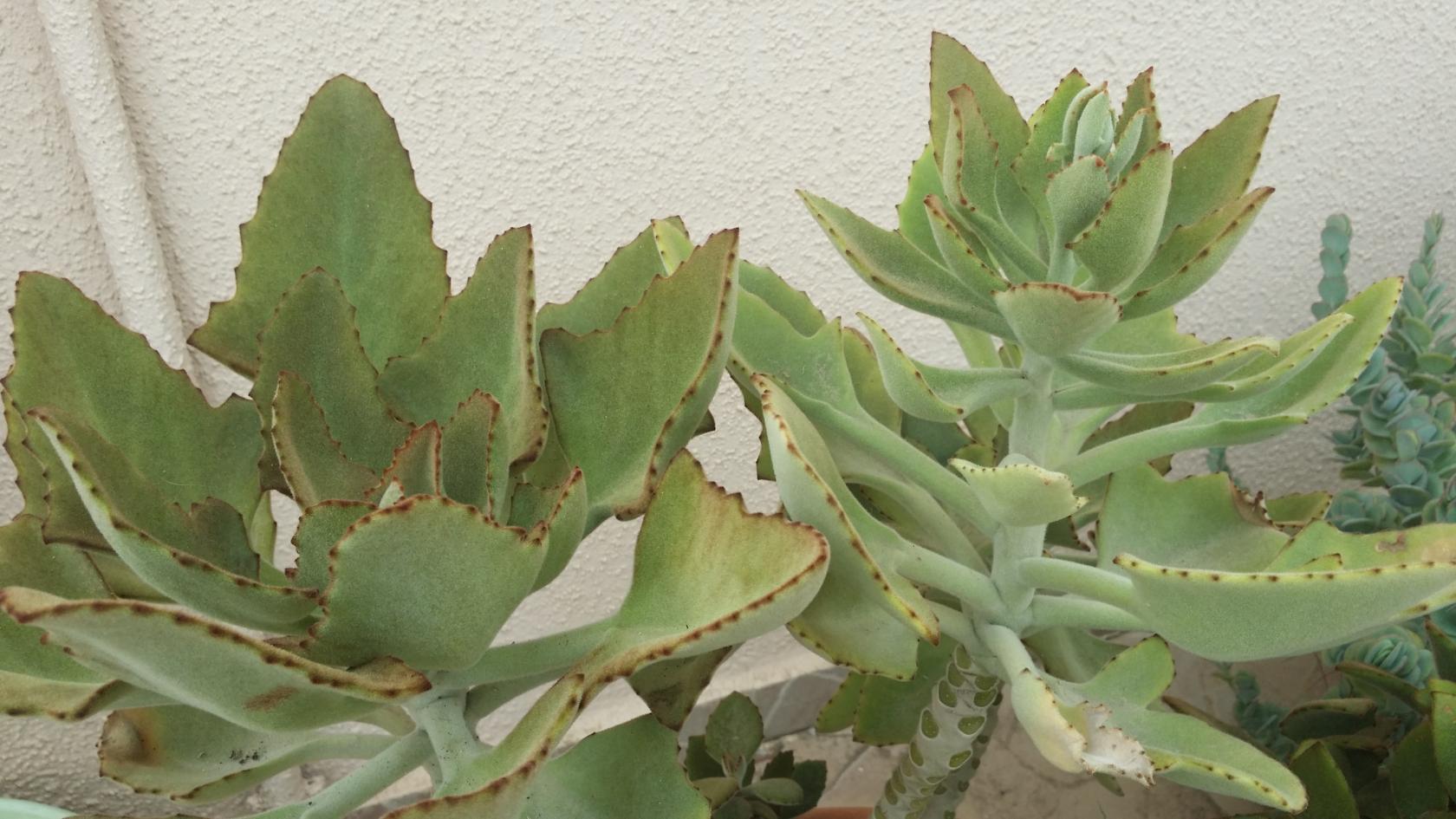
Below is K. maromokotrensis - the large cutting, and a "plantlet" formed from a leaf fragment of the large cutting. K. maromokotrensis becomes wider by the day, and also changes its color.
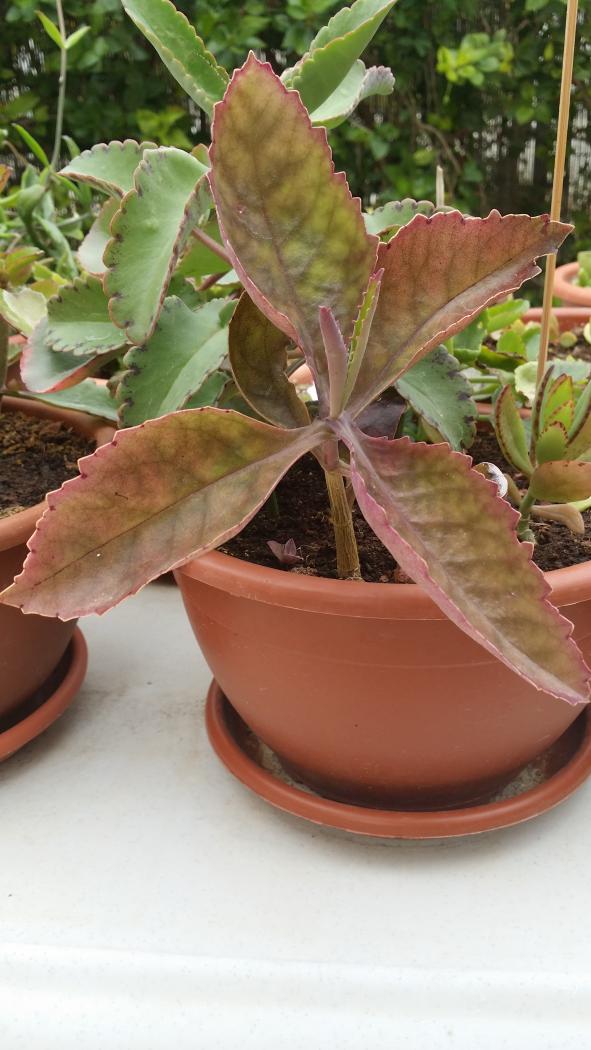
Offline
#4 2014-10-22 17:28:56
- margrit
- Administrator
- Registered: 2007-09-03
- Posts: 5,388
Re: Kalanchoe and others in my collection
Thank you Ronen. Particularly for the hairy synsepala - yes, it is somewhat felty ----- "hairy" would be a bit exaggerated ....
The flowers of 'Rose Leaf' will be very interesting !
Maromokotrensis - we have already seen on Benoît's photos that the leaf margins are quite variable :
http://www.crassulaceae.ch/de/artikel?a … M&aID=3240
If you agree I would like to publish some of your photos on the ICN site ? ?
Offline
#5 2014-10-22 17:55:47
- Ronen
- Member
- Registered: 2014-03-25
- Posts: 49
Re: Kalanchoe and others in my collection
'Rose Leaf' flowers every year, if you want I have photos from previous years...
When I got maromokotrensis it had much rounder leaves like in Benoît's first photo... What really surprised me though is the brown-pink coloration, this species online ranges from dark to light green without this pink tan. It is definitely one of the least familiar species to me!
And of course I agree, but maybe you would like better photos, from another angle or background?
Offline
#6 2014-10-22 19:10:57
- Tom
- Member

- Registered: 2011-09-08
- Posts: 1,722
Re: Kalanchoe and others in my collection
The 4th picture, from Sven's gallery, show a plant particularly velvety.
Offline
#7 2014-10-23 20:12:46
- margrit
- Administrator
- Registered: 2007-09-03
- Posts: 5,388
Re: Kalanchoe and others in my collection
You are right, Tom, Sven has photos of velvety plants. I have never had one, all clones I ever have got were glabrous.
Yes, Ronen, flower photos of 'Rose Leaf' would be very welcome.
Maromokotrensis - when the cutting arrived with you, it already had this colour or it changed colour while growing in your conditions ?
The descriptions says : "... under certain conditions leaves become purplish green." That's true for your plant ....
Offline
#8 2014-10-24 14:26:36
- Ronen
- Member
- Registered: 2014-03-25
- Posts: 49
Re: Kalanchoe and others in my collection
Sven's 4th clone is indeed the most velvety I've seen of this species, much more than mine...
When I got maromokotrensis it looked just like in Benoît's first photo - the same leaf shape and color. My conditions are clearly different!
Below is 'Rose Leaf' from March-April 2014:
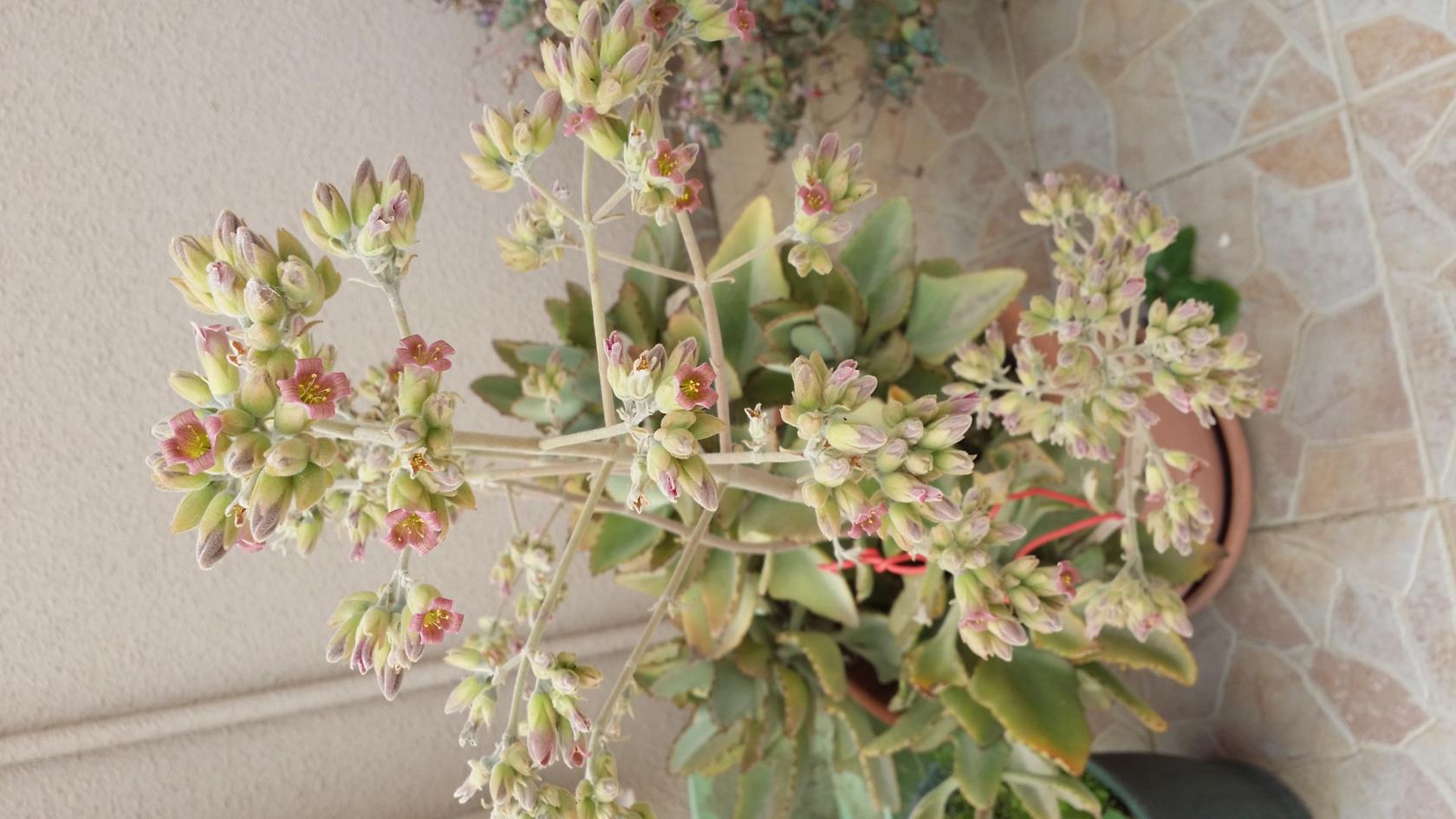
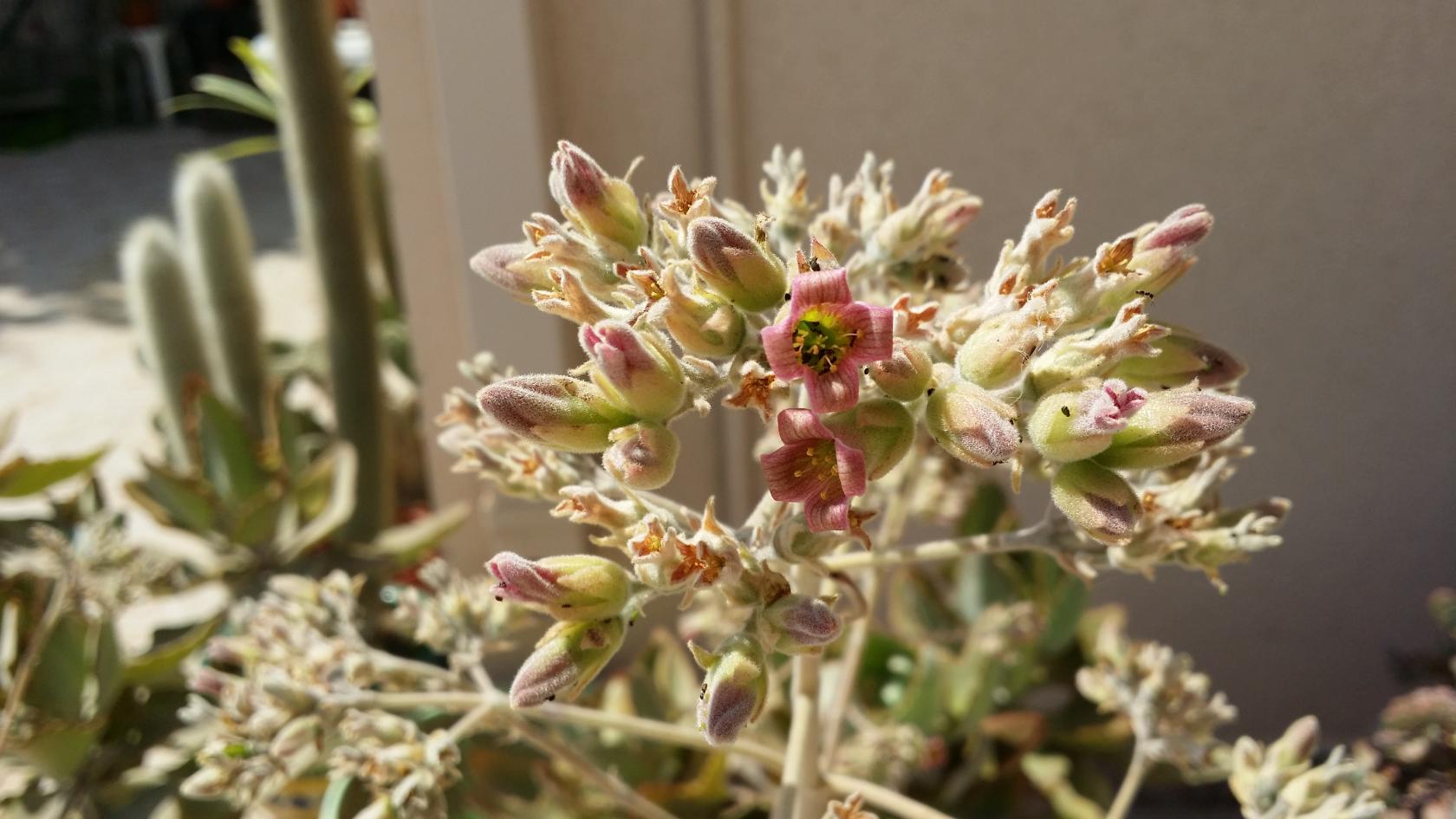
Also, Lenophyllum are flowering now, including this L. guttatum (grown from a leaf potted during the winter):
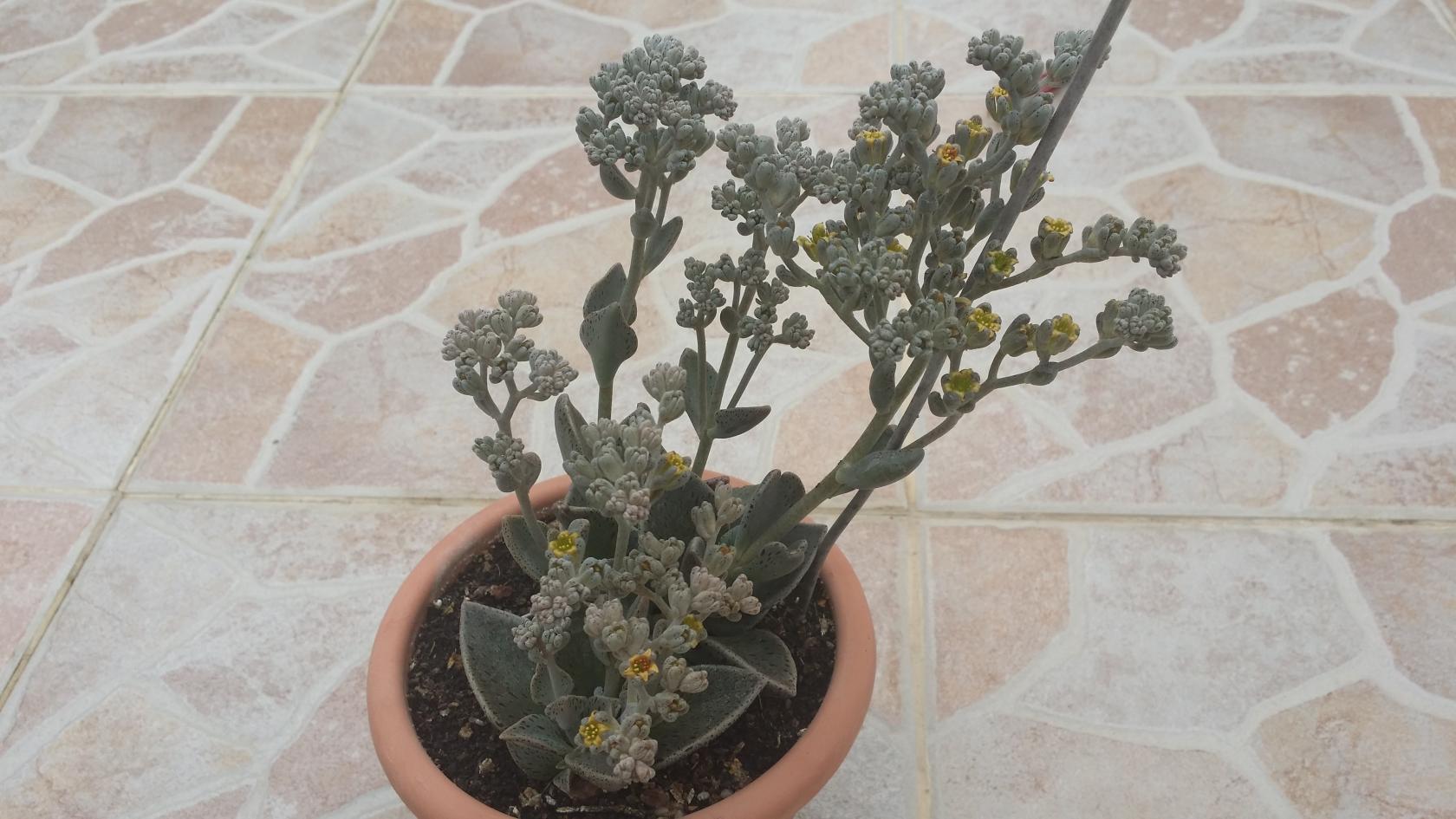
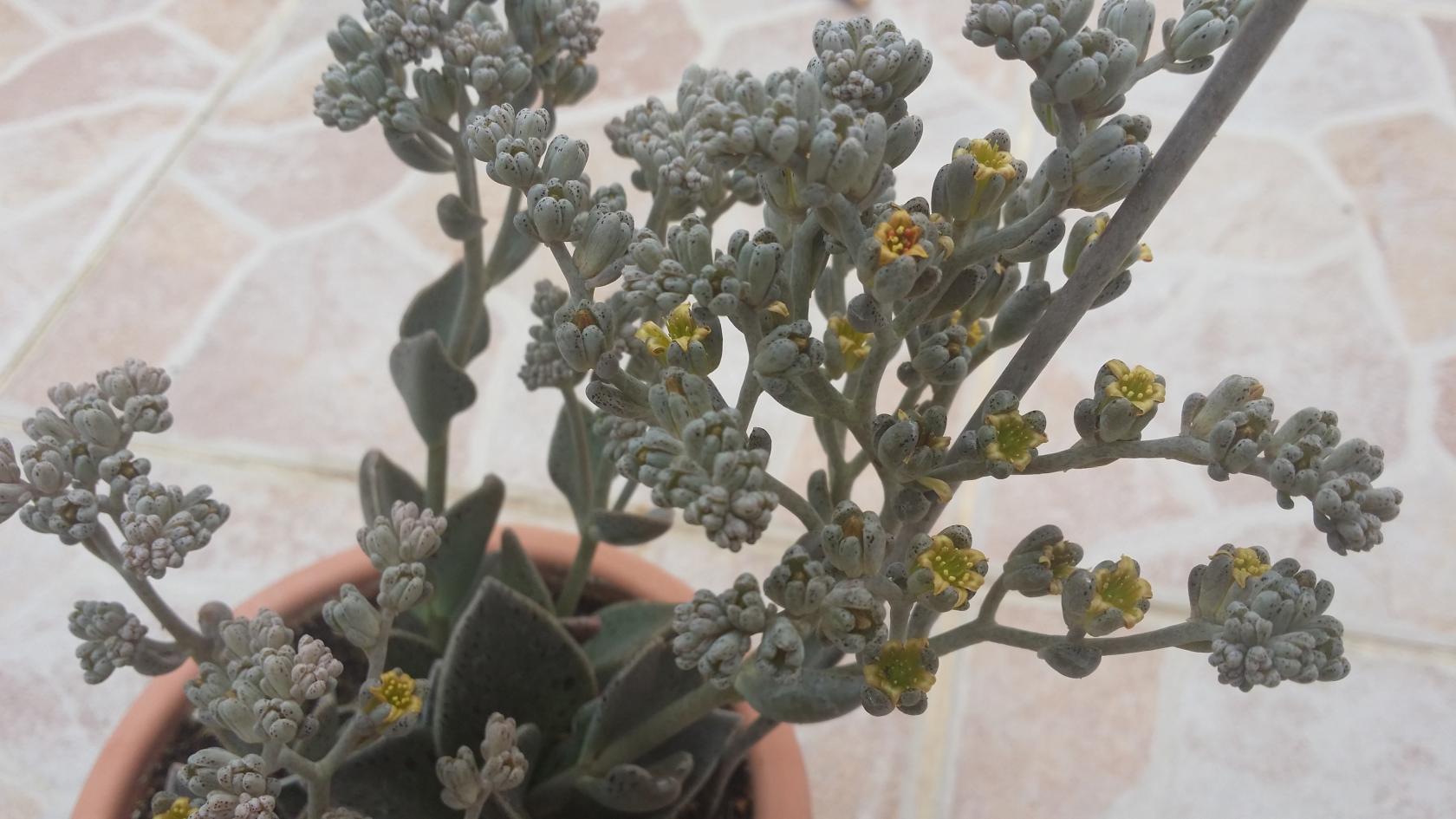
Offline
#9 2014-10-24 15:58:58
- Tom
- Member

- Registered: 2011-09-08
- Posts: 1,722
Re: Kalanchoe and others in my collection
Very floriferous ! ![]()
'Rose Leaf' looks so sweet.
Offline
#10 2014-10-24 19:49:38
- margrit
- Administrator
- Registered: 2007-09-03
- Posts: 5,388
Re: Kalanchoe and others in my collection
Offline
#11 2014-10-26 16:38:43
- Ronen
- Member
- Registered: 2014-03-25
- Posts: 49
Re: Kalanchoe and others in my collection
Thank you, Tom, 'Rose leaf' indeed flowers in massive quantities and for a long time - I even had to tie one of the inflorescences before it completely broke off from excessive weight. And the pink color is much more attractive than that of beharensis...
Thanks, Margrit, for using these photos! I'll post some new ones tomorrow.
Offline
#12 2014-10-27 16:37:35
- Ronen
- Member
- Registered: 2014-03-25
- Posts: 49
Re: Kalanchoe and others in my collection
K. peltigera looks really great right now, maybe I'll witness it's flowers for the first time soon?
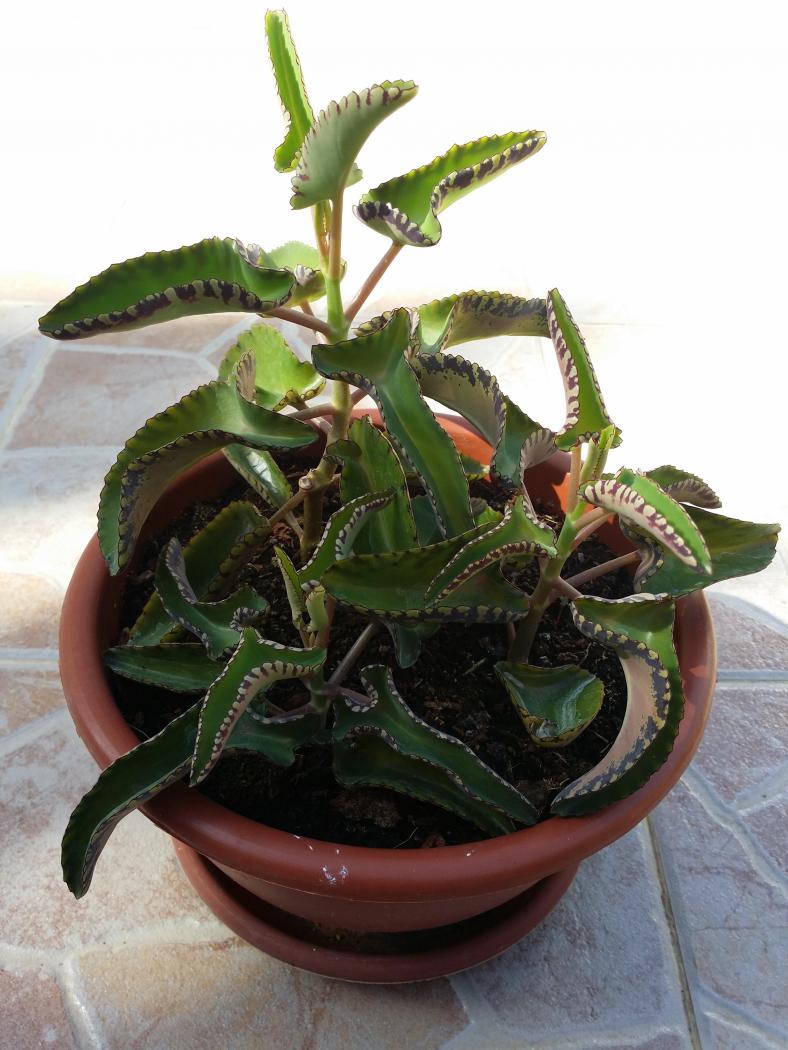
K. spathulata var spathulata will flower soon:
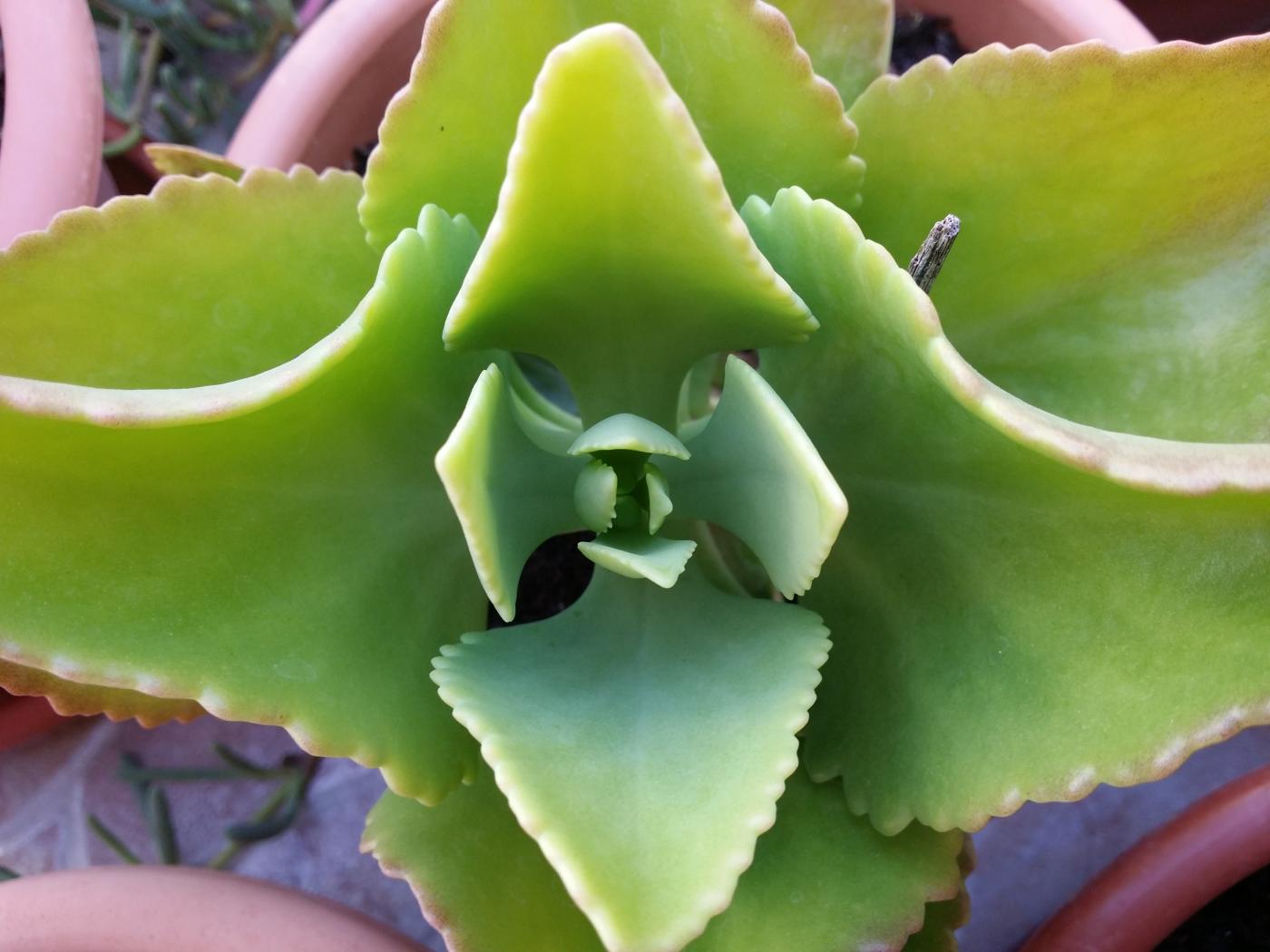
My typical clone of millotii, too:
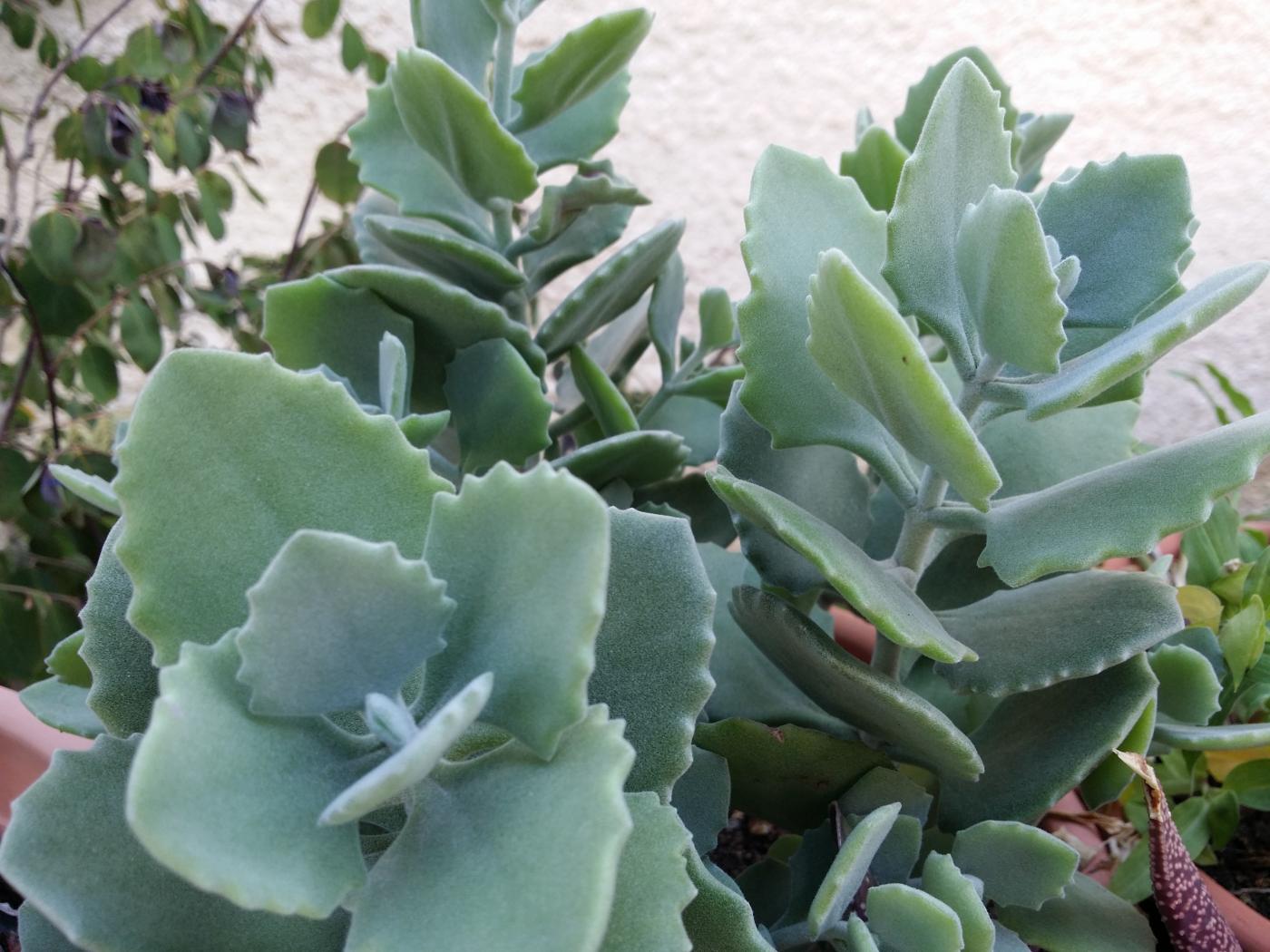
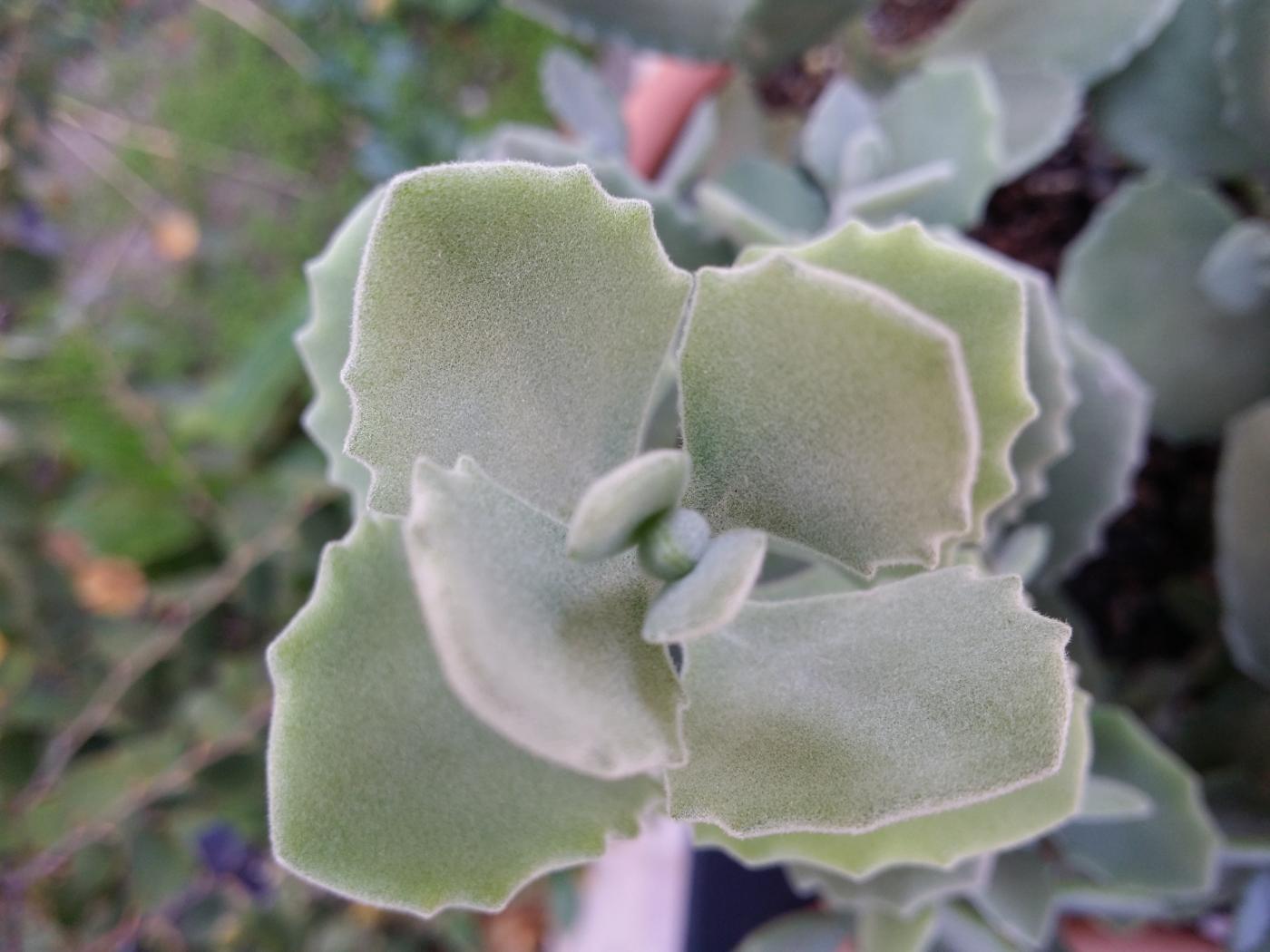
As well as both clones of humilis:
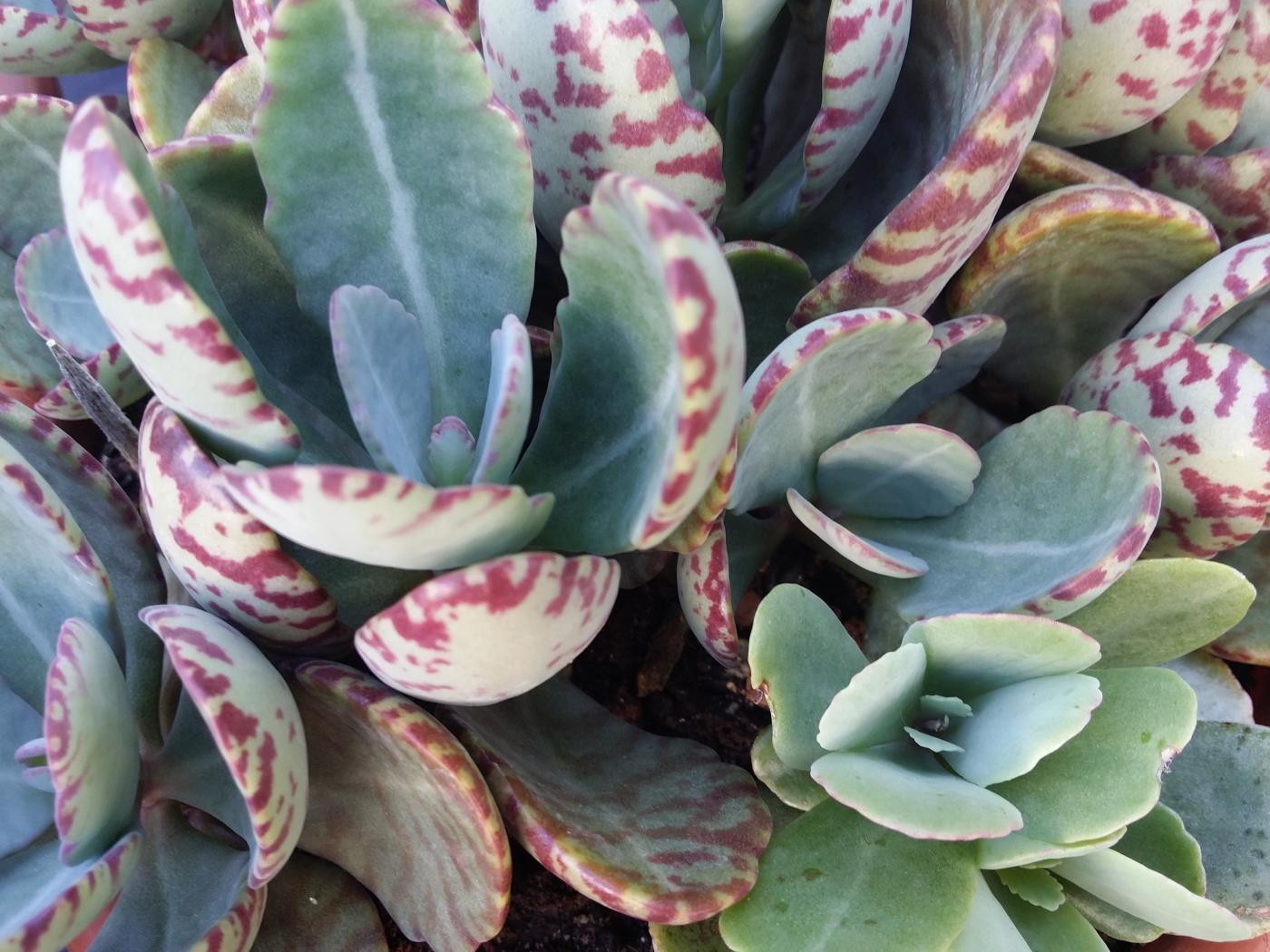
And marnieriana:
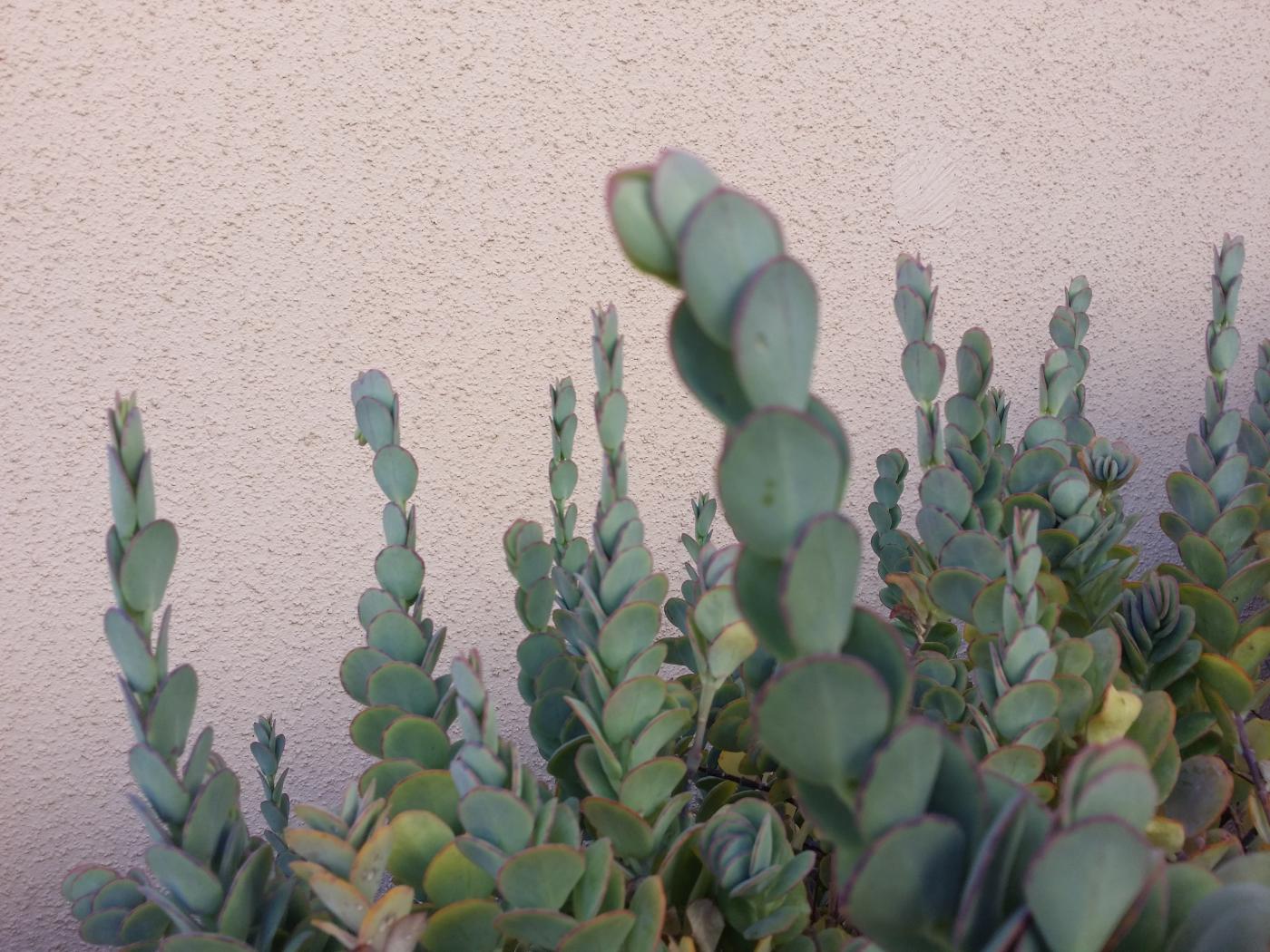
Offline
#13 2014-10-27 20:28:52
- margrit
- Administrator
- Registered: 2007-09-03
- Posts: 5,388
Re: Kalanchoe and others in my collection
Thank you Ronen - looking forward to your flower photos !
Offline
#14 2014-11-20 16:26:41
- Ronen
- Member
- Registered: 2014-03-25
- Posts: 49
Re: Kalanchoe and others in my collection
Nearly a month passed since my last post, during which my collection suffered through a very serious hail storm (the worst I've seen). Nevertheless, the plants have regenerated quickly enough to post some new photos... Excuse the 5cm holes and other types of damage on some leaves.
K. spathulata var spathulata in buds:
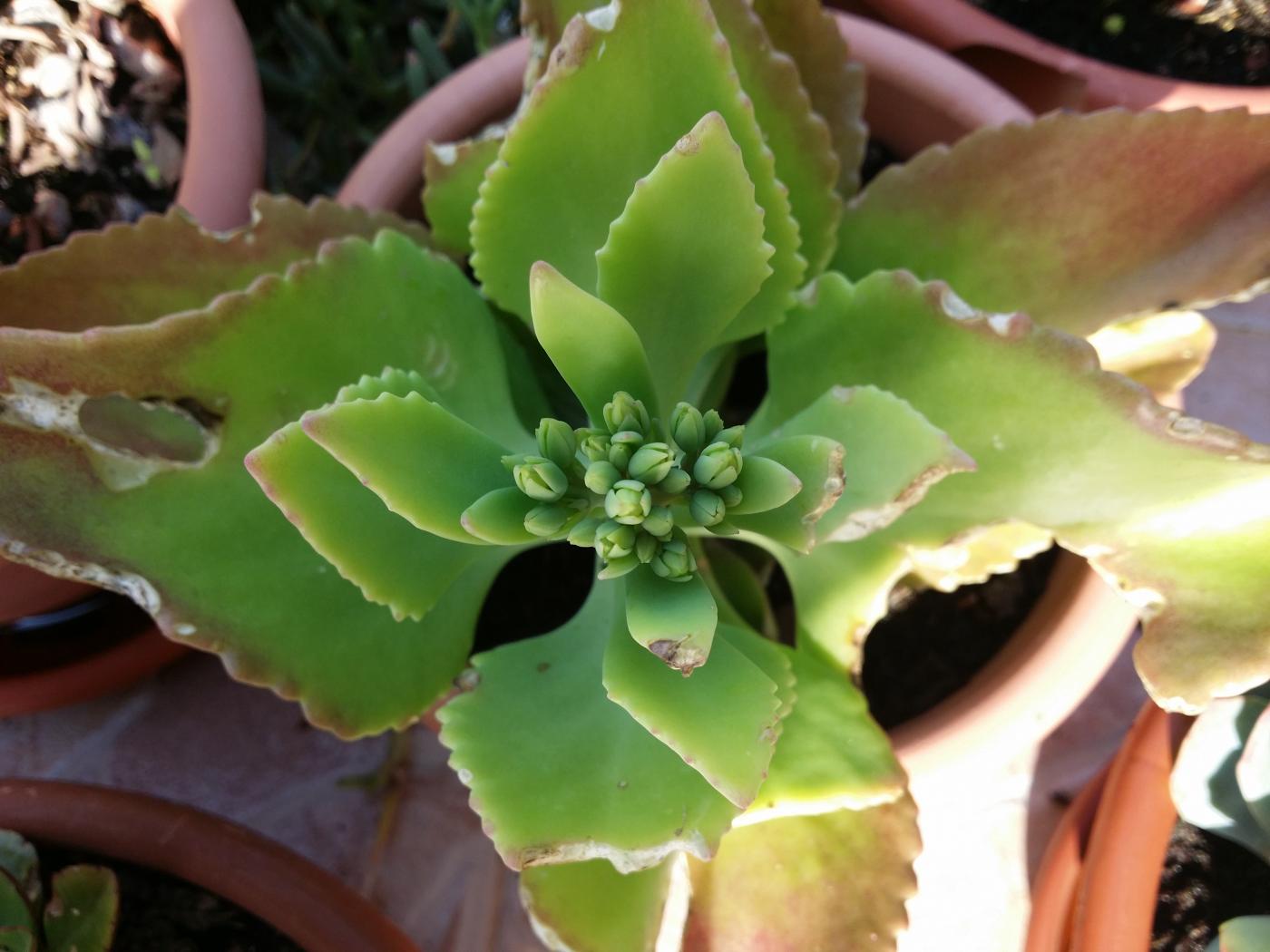
Kenyan K. prittwitzii will flower this year:
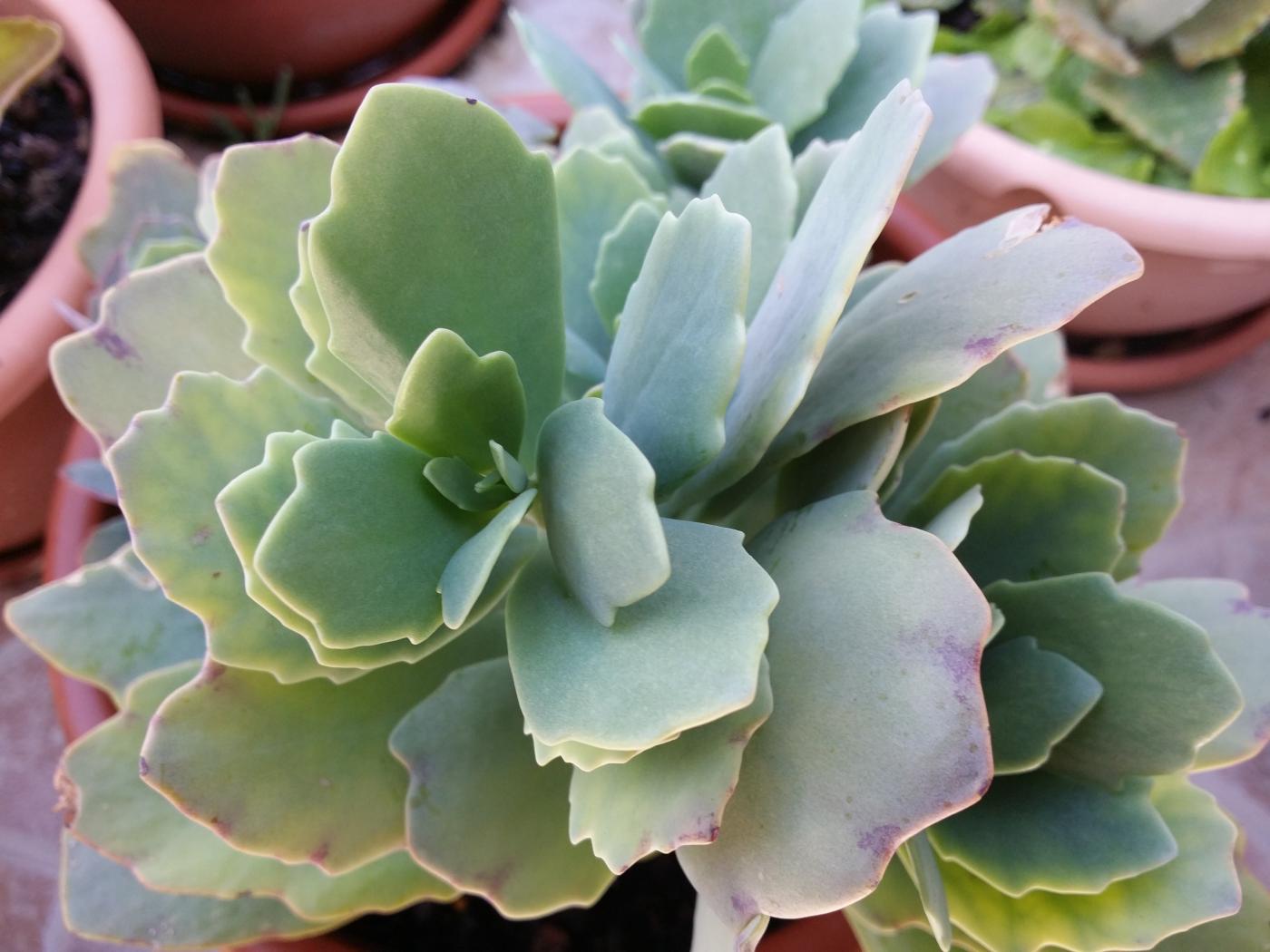
K. peltigera:
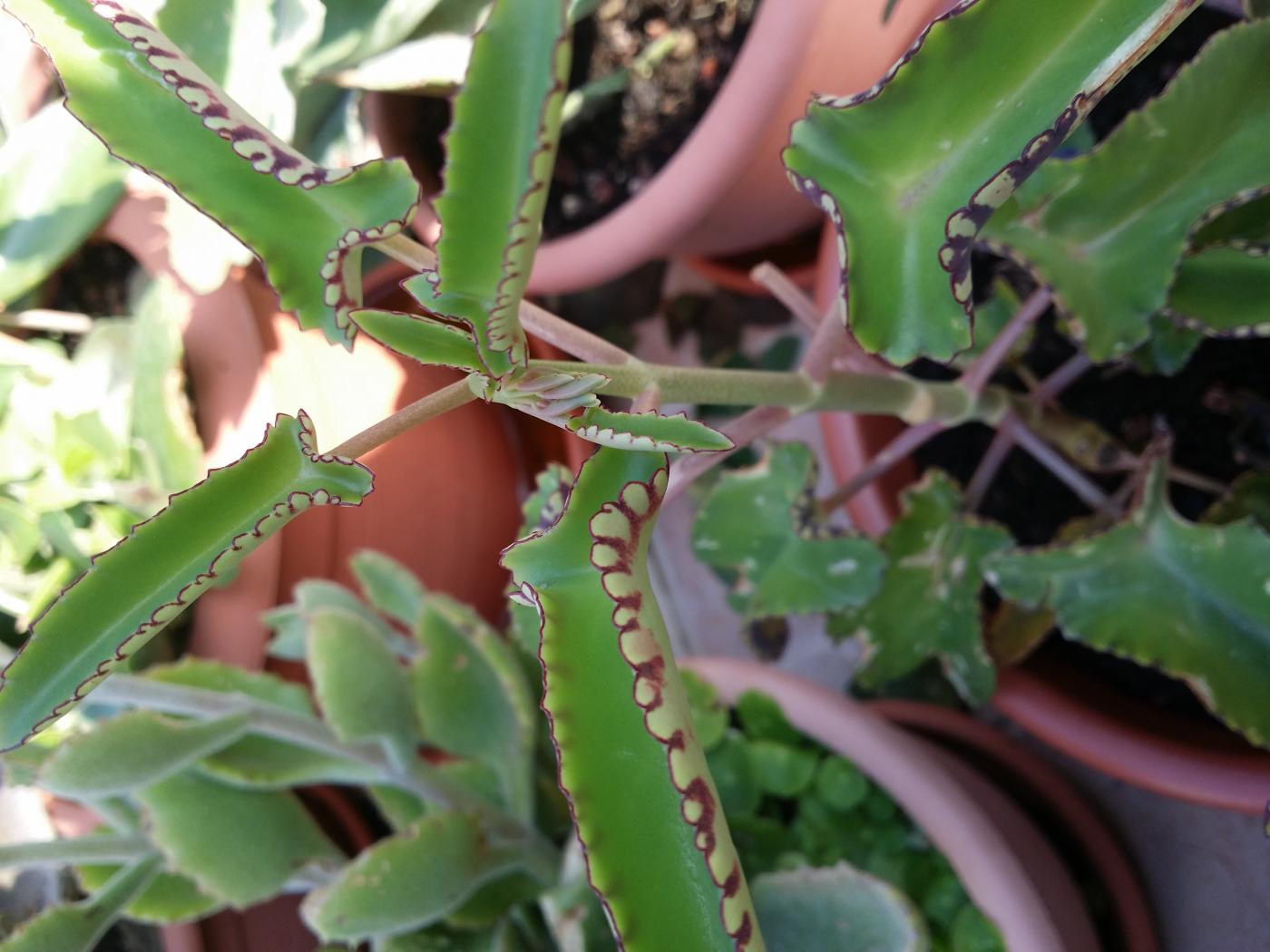
K. rebmannii:
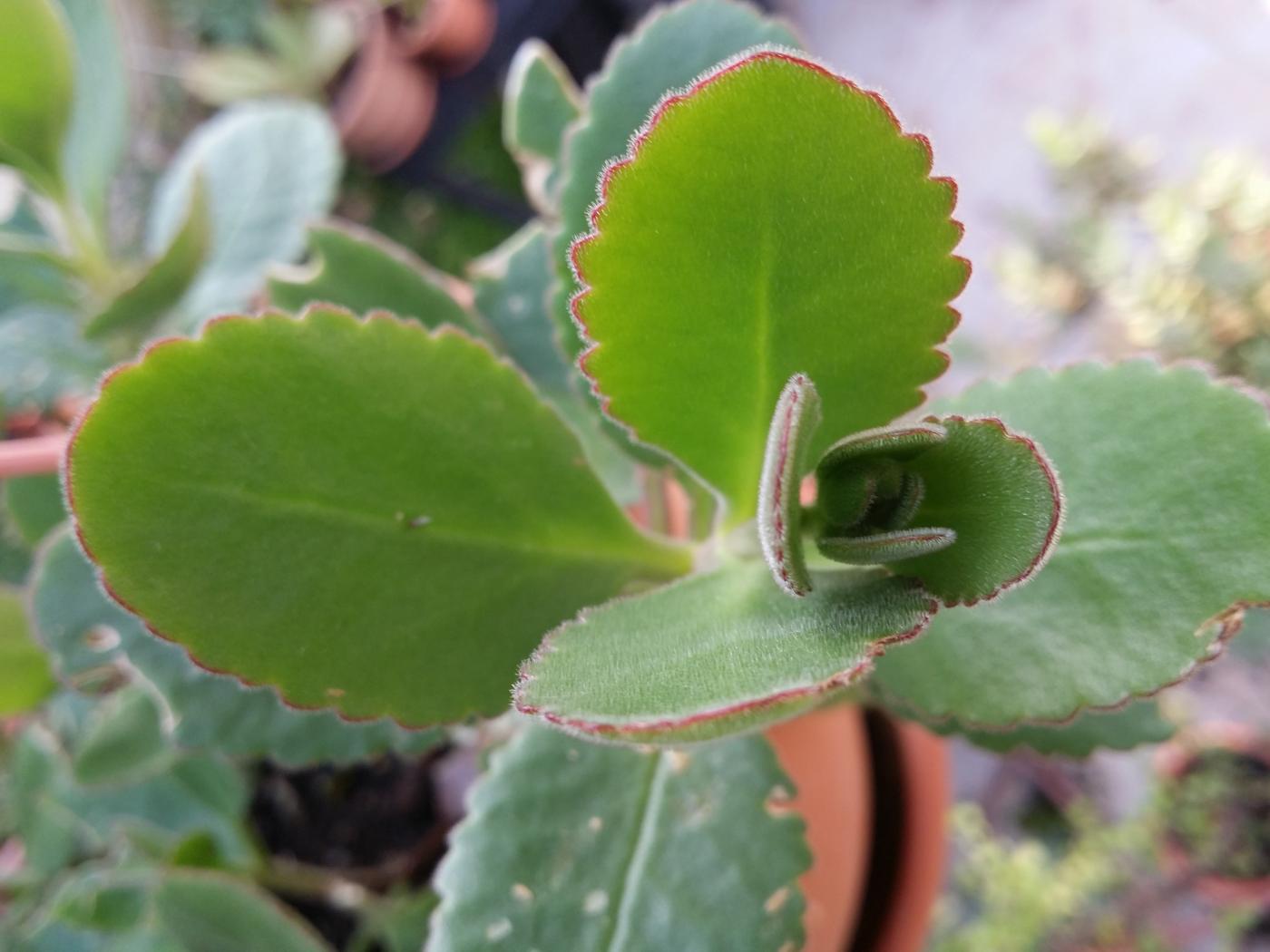
K. rosei ssp/var rosei:
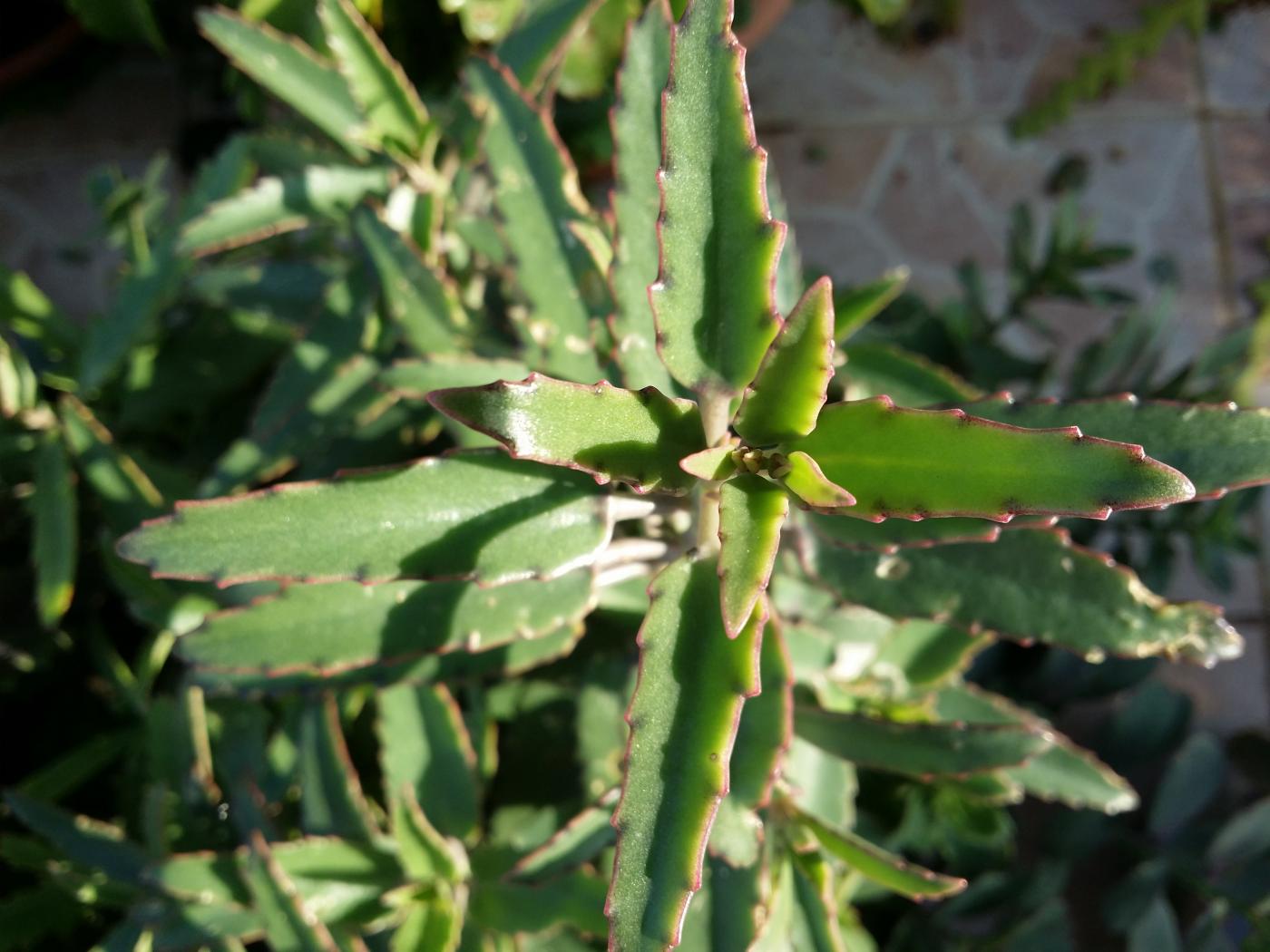
My "regular" clone of K. laxiflora:
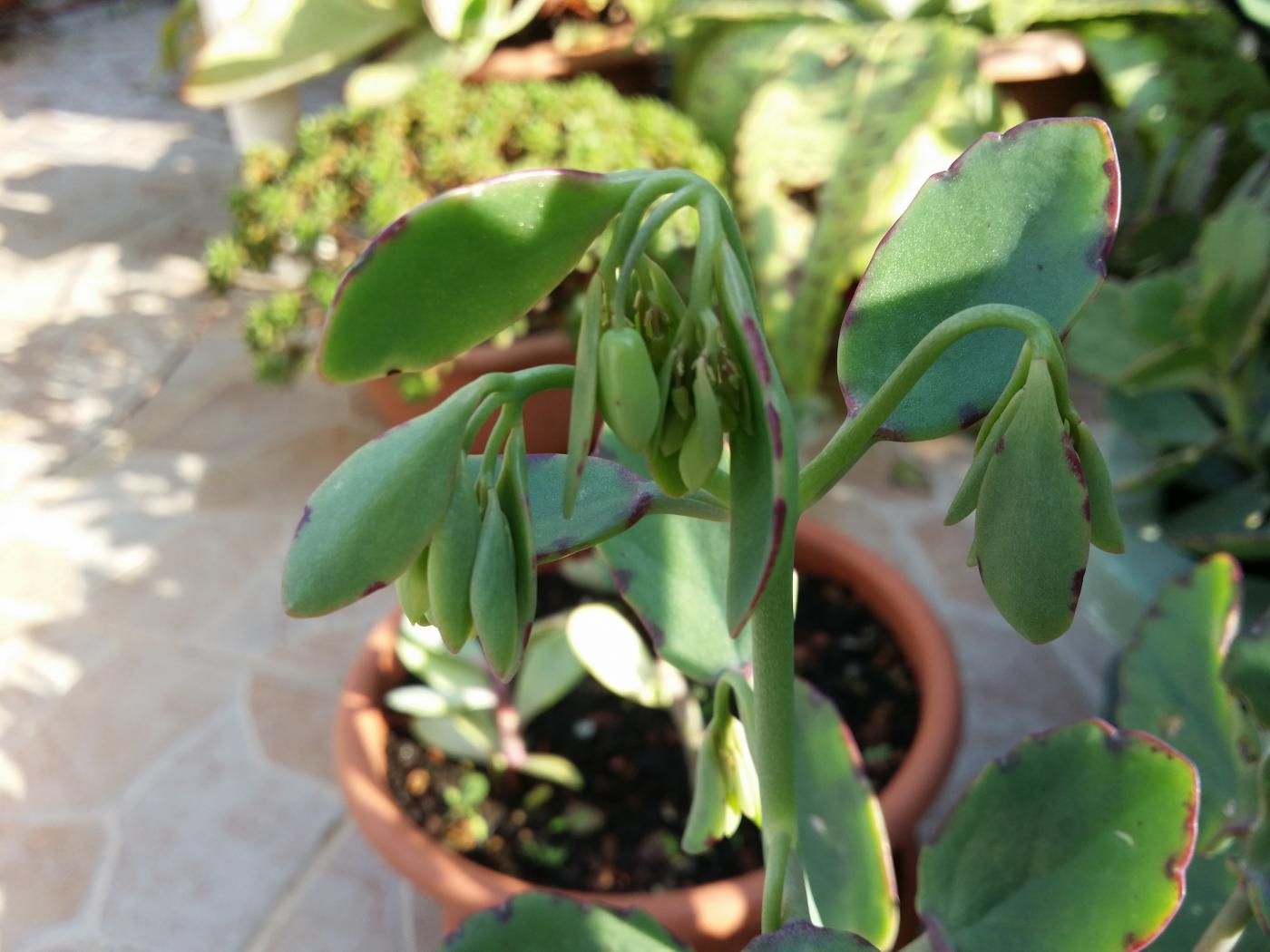
K. tomentosa 'European Clone':
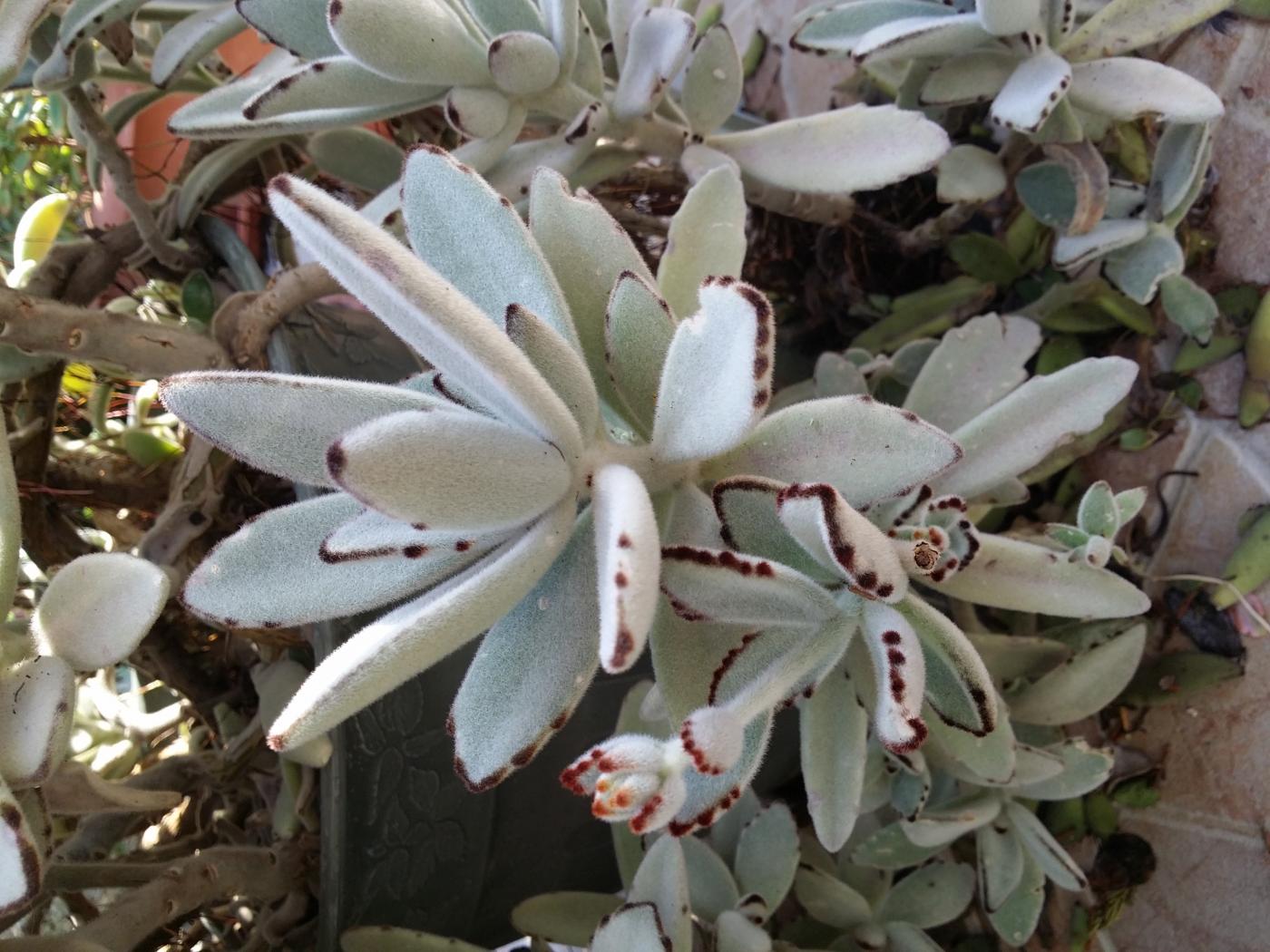
A surprise - K. rubella, derived from a bulbil, with leaves in whorls of three:
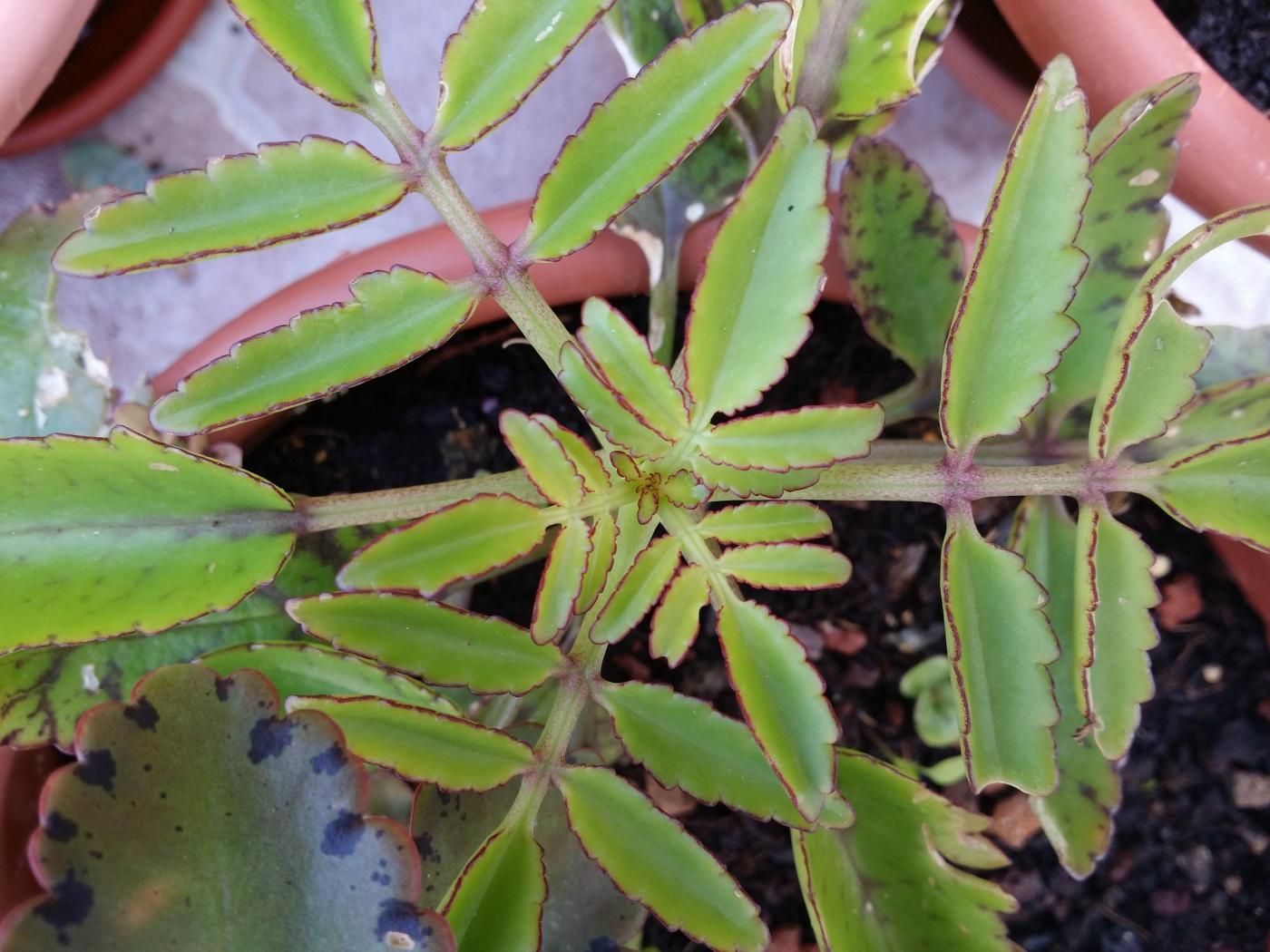
Offline
#15 2014-11-20 20:26:31
- Ben152
- Member
- From: Nouvelle-Calédonie
- Registered: 2009-10-21
- Posts: 546
Offline
#16 2014-11-20 21:31:24
- Paul
- Moderator
- Registered: 2009-01-13
- Posts: 1,885
Re: Kalanchoe and others in my collection
Superbe : très belles photos !
Surtout les "formes horizontales"....
Offline
#17 2014-11-21 21:55:52
- Ronen
- Member
- Registered: 2014-03-25
- Posts: 49
Re: Kalanchoe and others in my collection
Thank you both!
Here are some photos of other Kalanchoe getting ready to flower -
Four different clones of fedtschenkoi (have a few more):
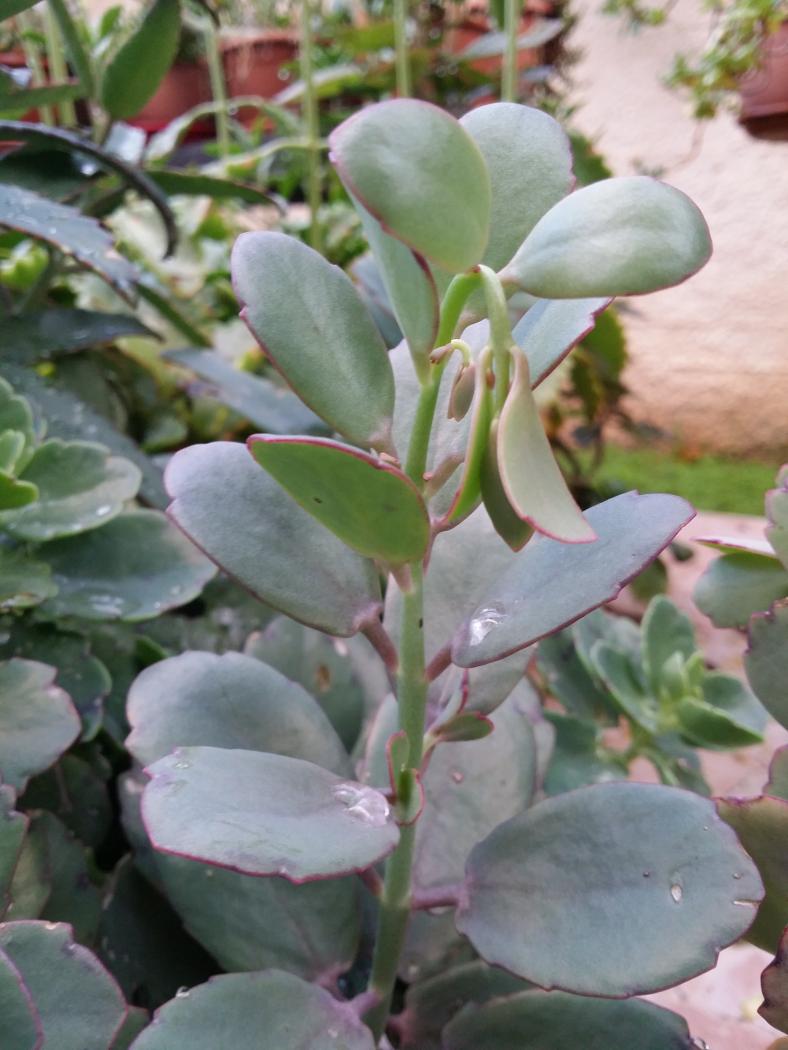
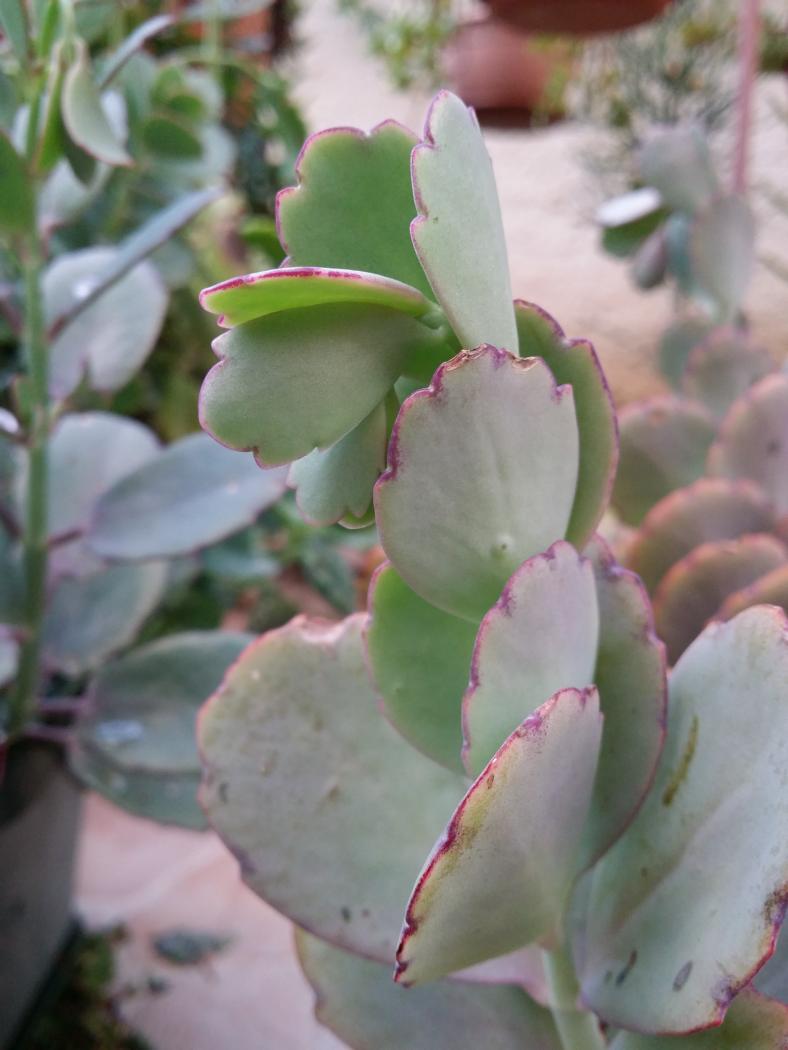
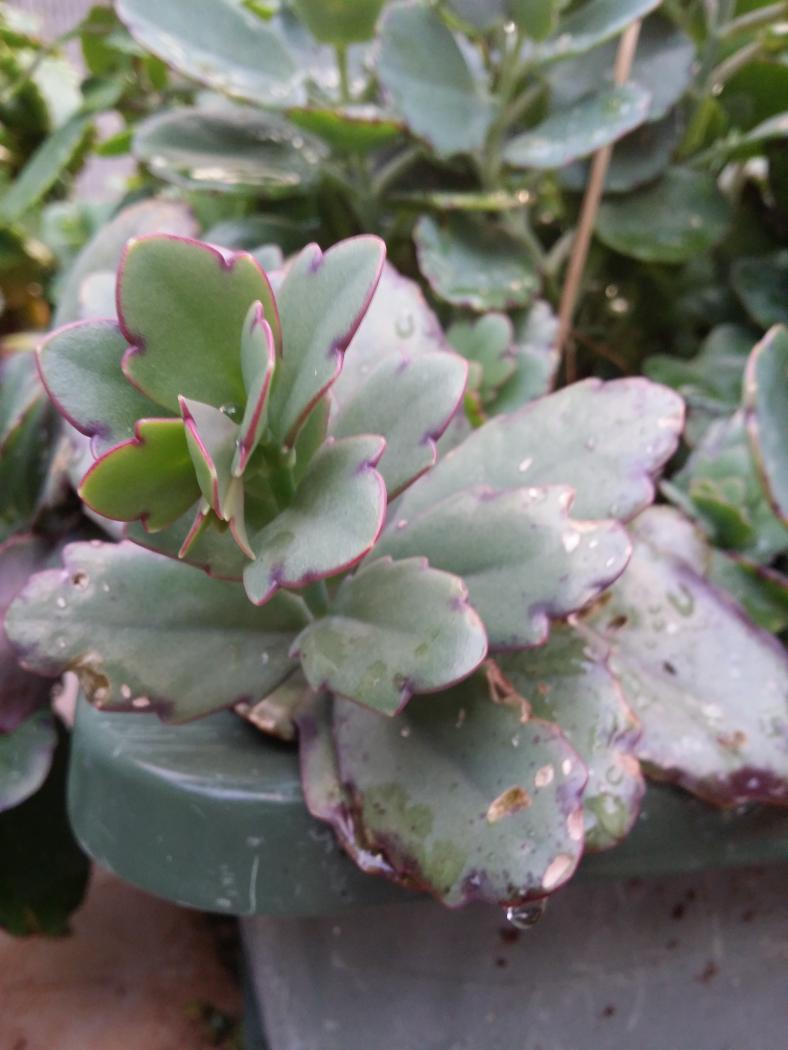
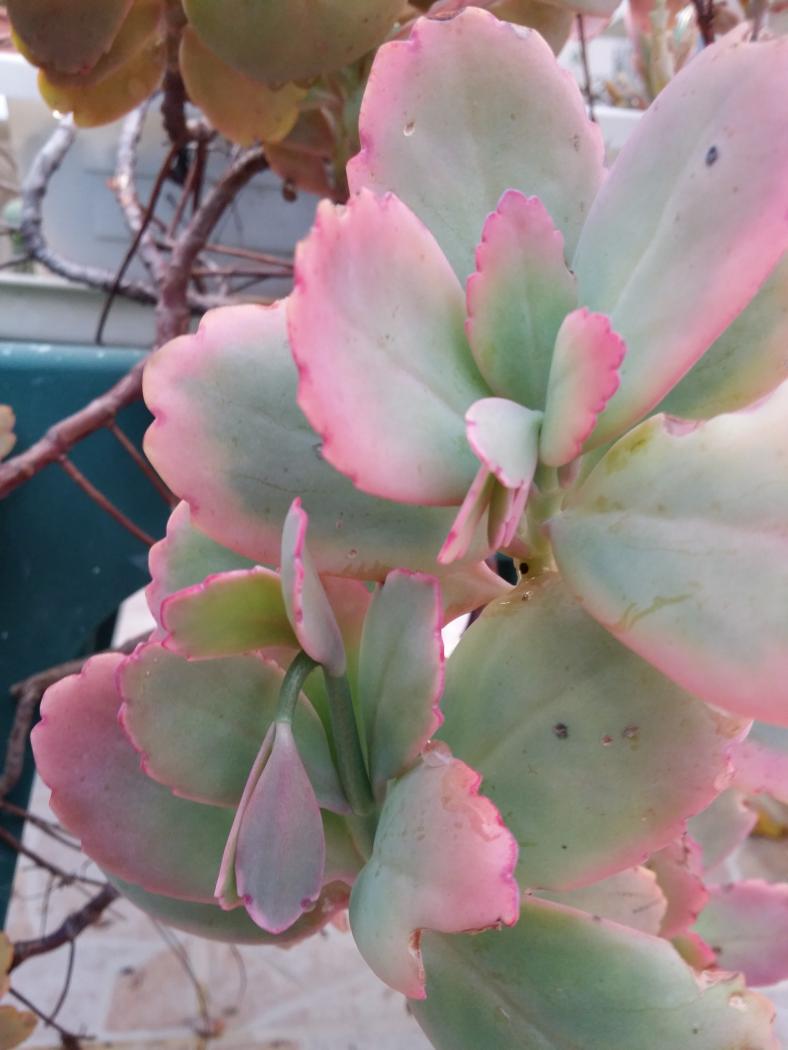
K. laciniata, possibly the form named 'African Queen'?
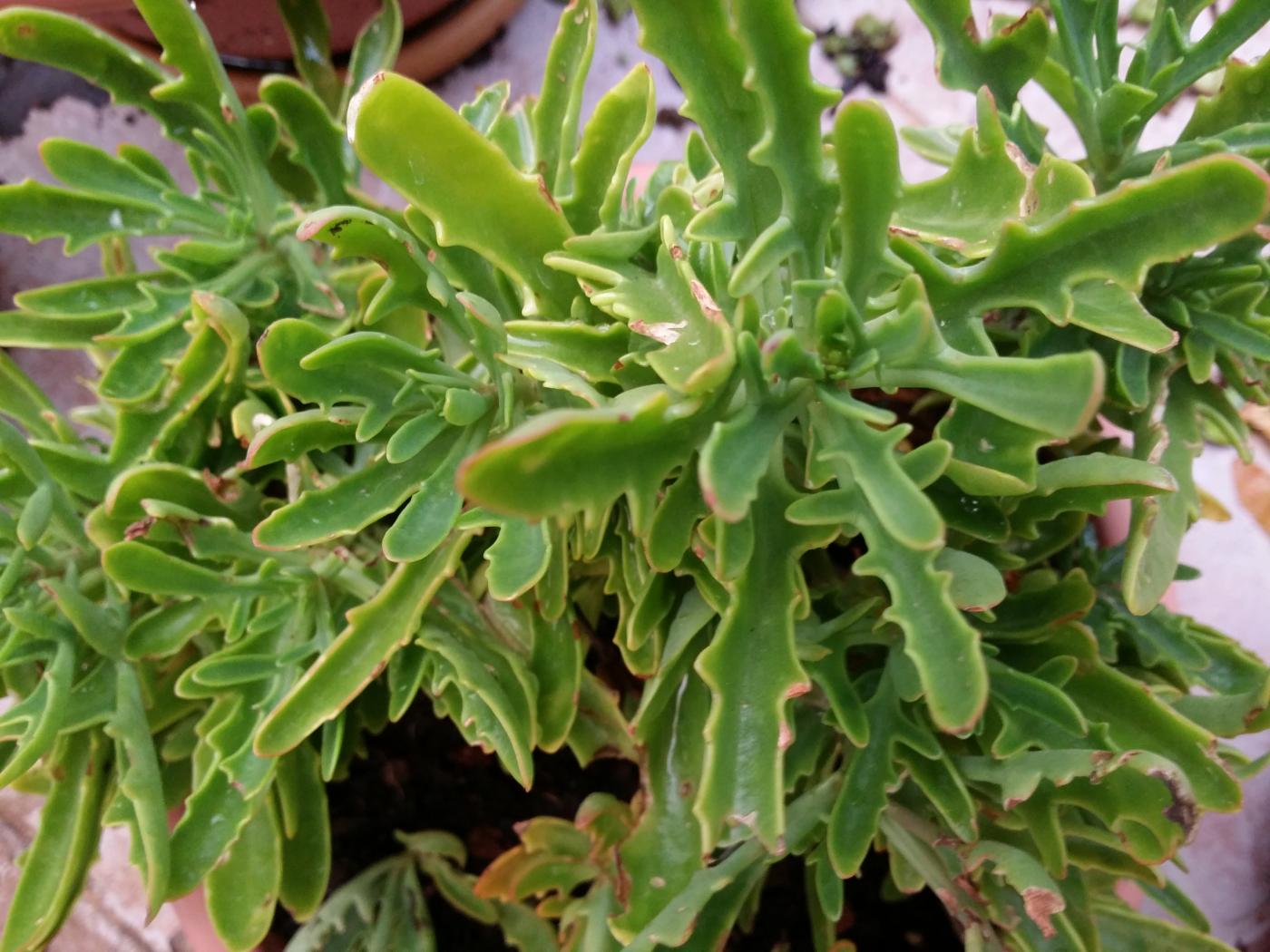
K. "lugardii" (a second prittwitzii):
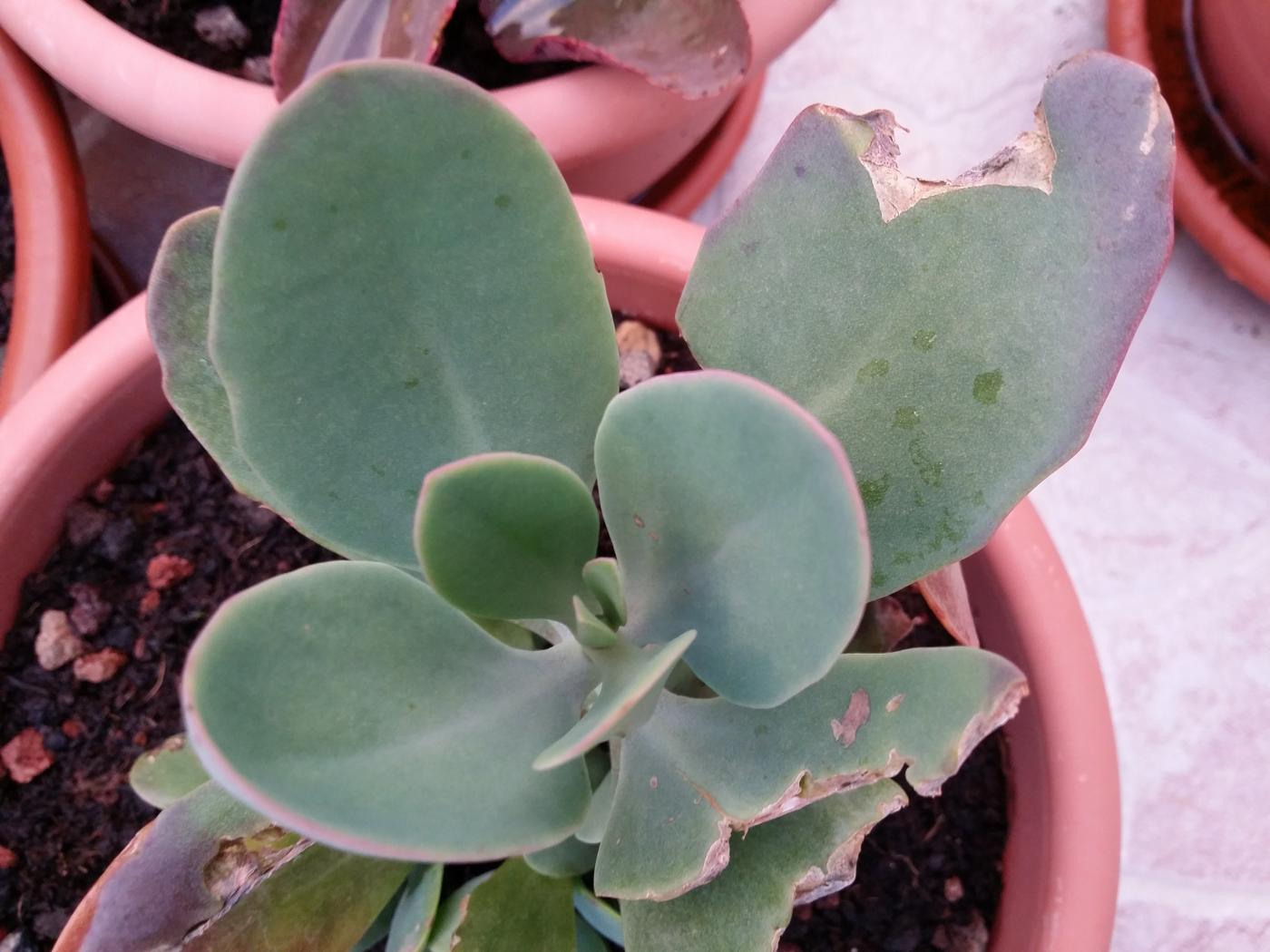
K. gracilipes x manginii 'Tessa':
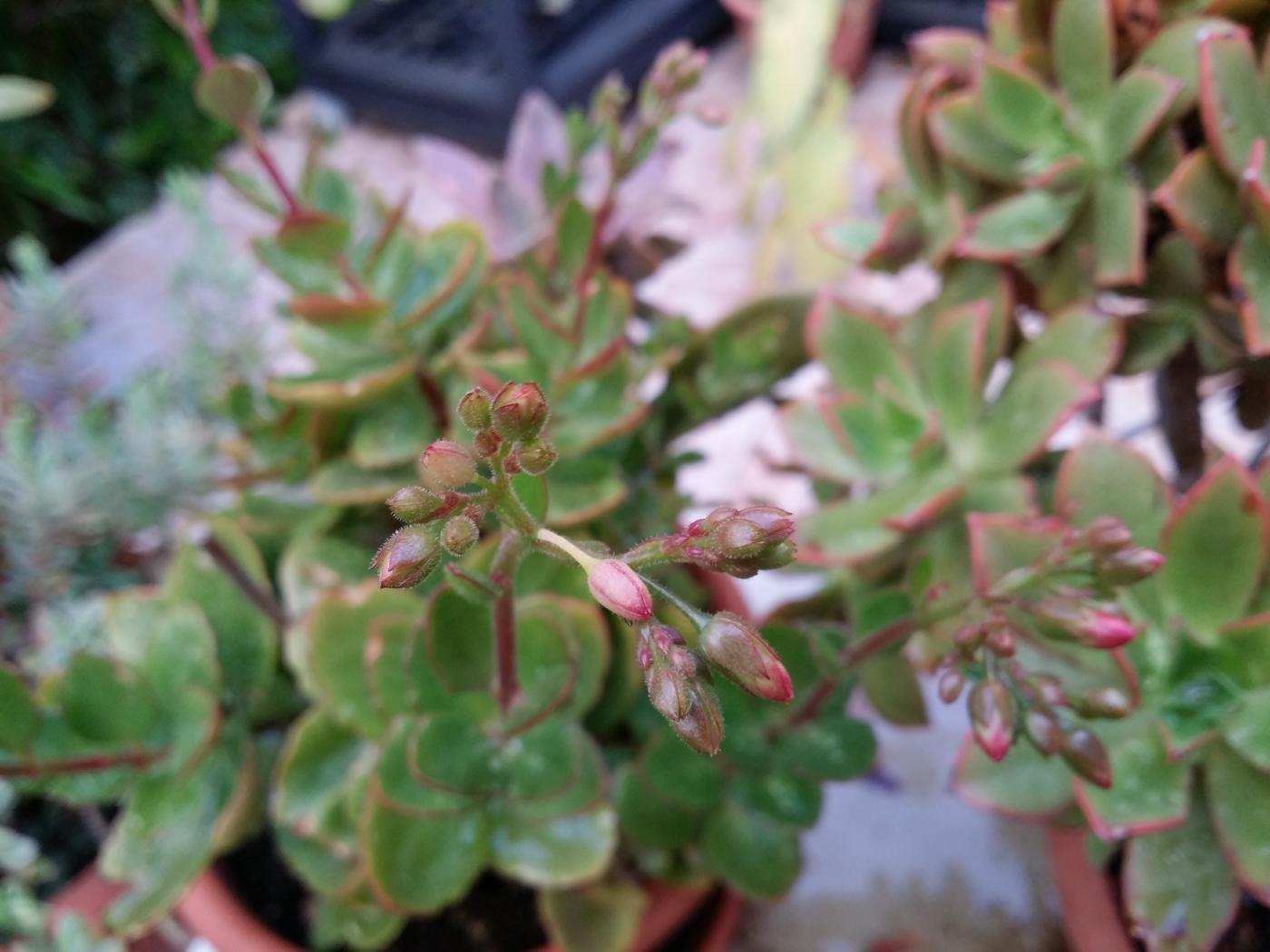
Offline
#18 2014-11-22 05:41:32
- Tom
- Member

- Registered: 2011-09-08
- Posts: 1,722
Re: Kalanchoe and others in my collection
Four different clones of fedtschenkoi
The fourth has beautiful colors. ![]()
Offline
#19 2014-11-22 14:49:10
- Ronen
- Member
- Registered: 2014-03-25
- Posts: 49
Re: Kalanchoe and others in my collection
Ronen wrote:Four different clones of fedtschenkoi
The fourth has beautiful colors.
Thanks, I also like this color gradient. This form was the regular fedtschenkoi 'Marginata' 3-4 years ago, but then some branches started losing the variegation, so I separated them and now the "variegation" in this pot is gradual with pink tan...
Here are some additional photos:
Richaud's sp. Pic Saint Louis which is very similar to tenuiflora and could be a hybrid (damaged a lot by hail, but in buds):
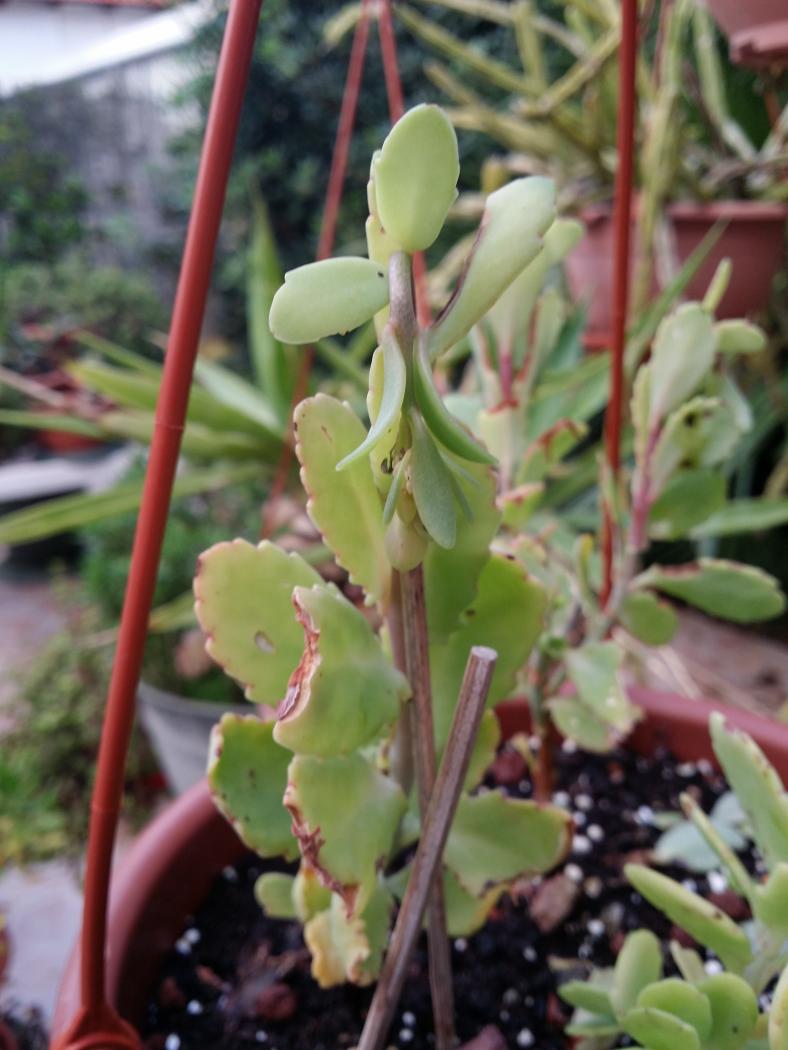
One of many "K. blossfeldiana", 'Marginata':
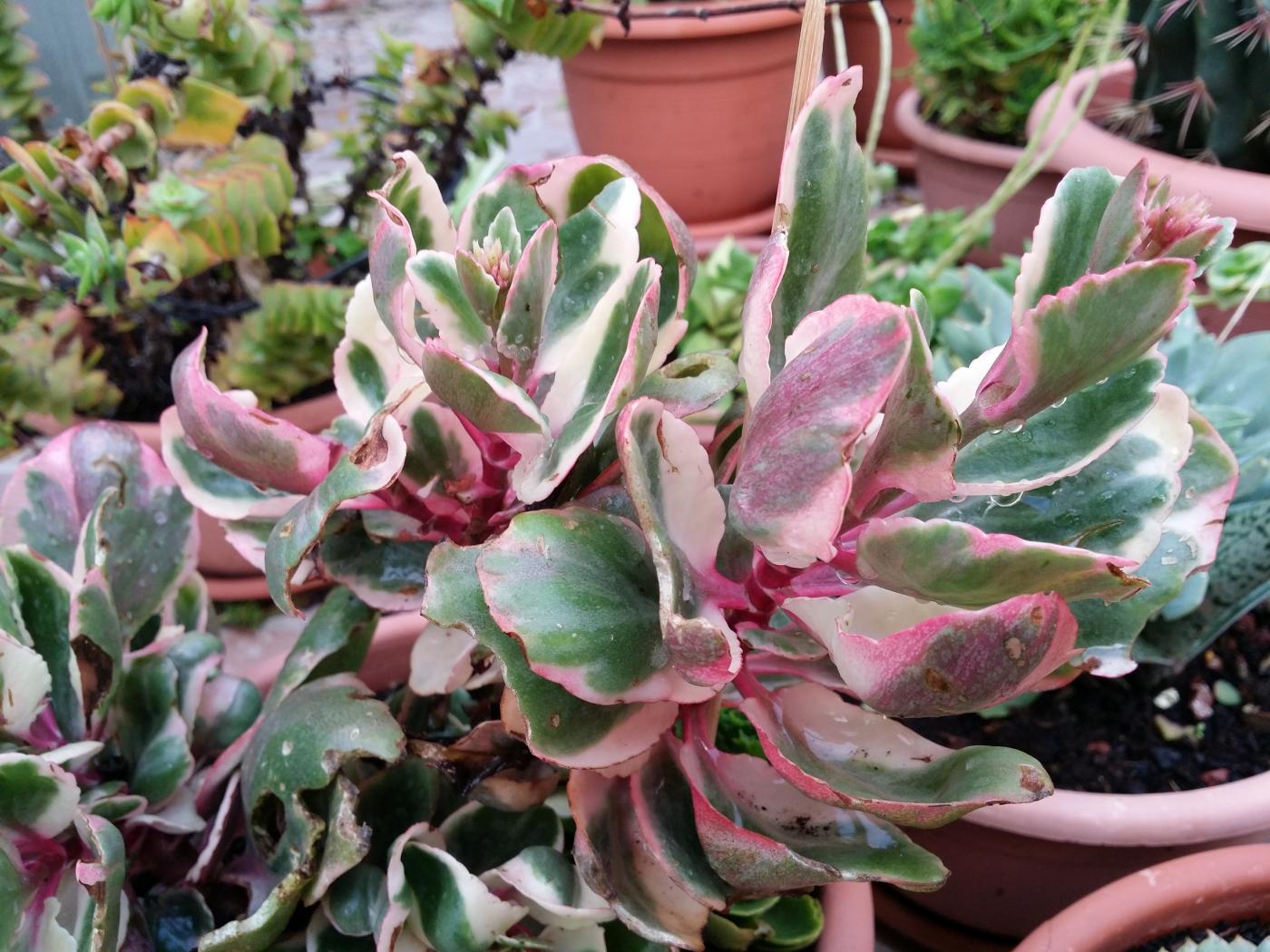
K. rosei ssp./var. serratifolia "var. seyrigi":
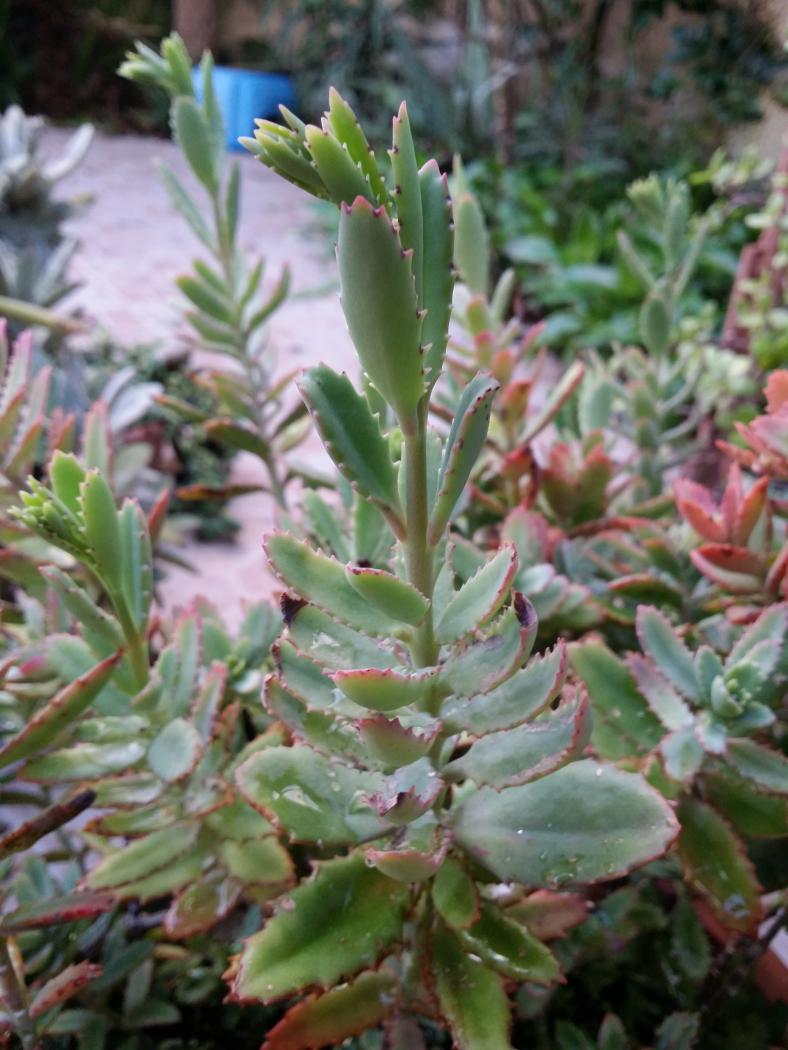
K. crenata:
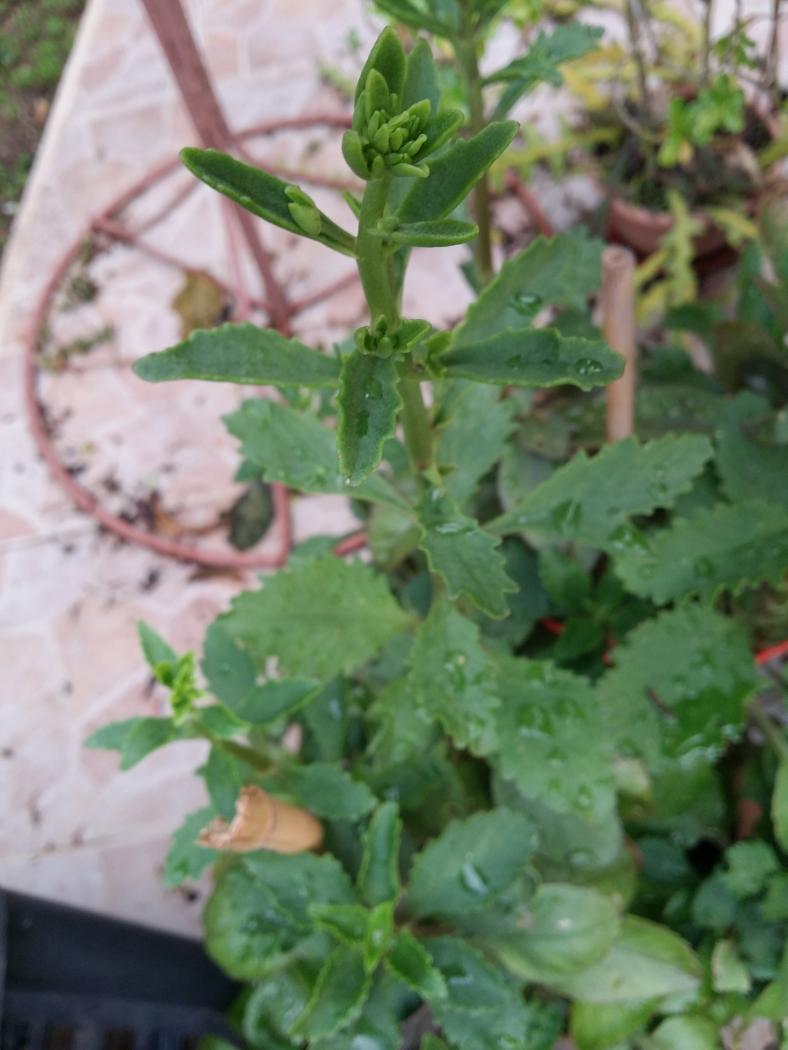
A 3 year old 2 meter long K. × houghtonii 'Jaws of Life":
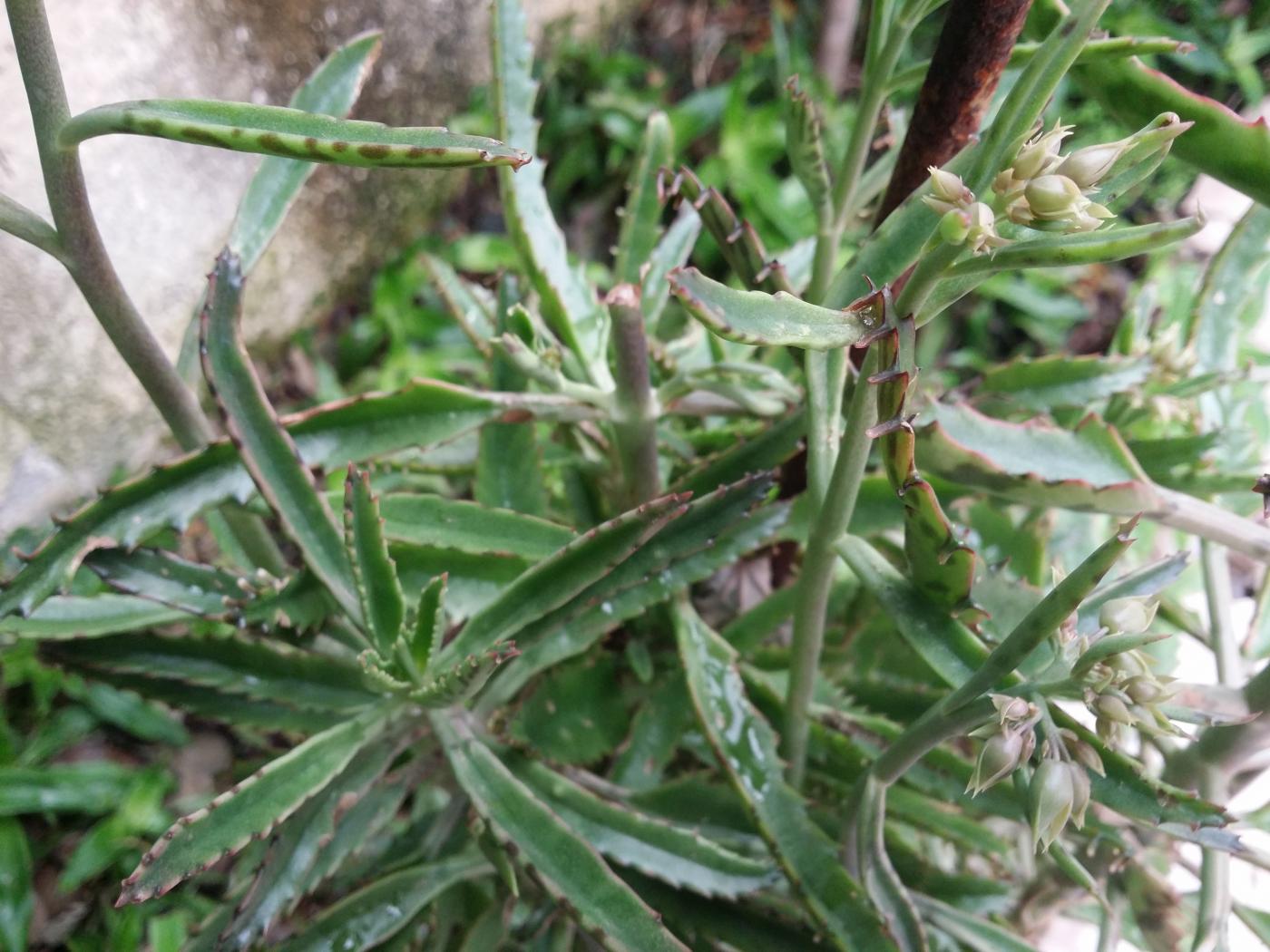
Crassula multicava ssp. multicava, the Kalanchoe mimic:
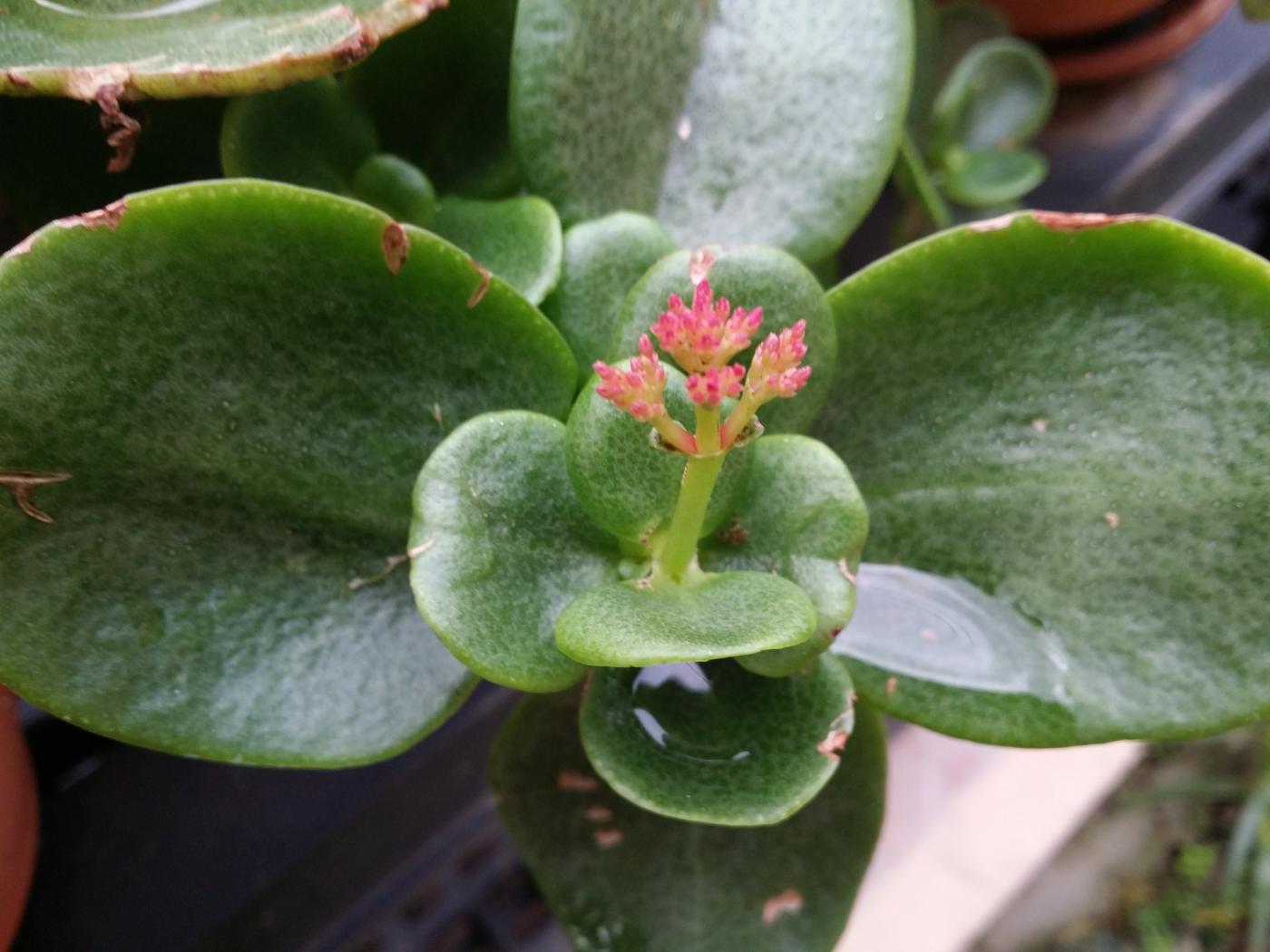
Offline
#20 2014-11-22 20:25:59
- margrit
- Administrator
- Registered: 2007-09-03
- Posts: 5,388
Re: Kalanchoe and others in my collection
It is good news, Ronen, that your plants have already recovered from the severe hail. Many thanks for sharing your photos !
Offline
#21 2014-11-25 10:48:31
- Ronen
- Member
- Registered: 2014-03-25
- Posts: 49
Re: Kalanchoe and others in my collection
Thank you, Margrit! Some good things were caused by the hail, too - for example a surprise I've found among the wreckage from K. peltigera. I assumed it can produce plantlets like that, but seen no evidence before. Descoings even wrote "total absence of bulbils" as translated from the description...
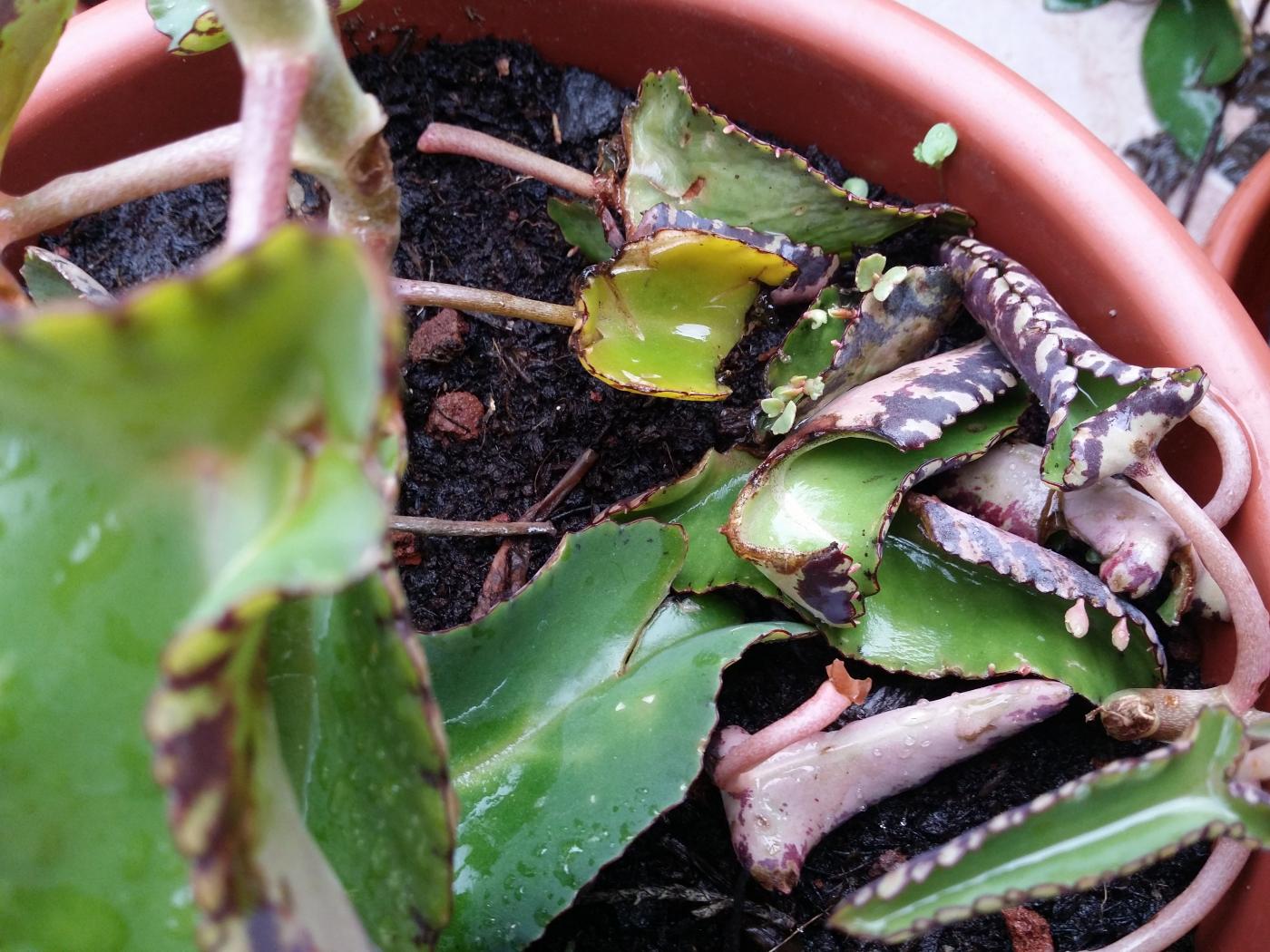
Here are two beauverdii that will soon flower (typical juellii, and one of the broad leaf forms):
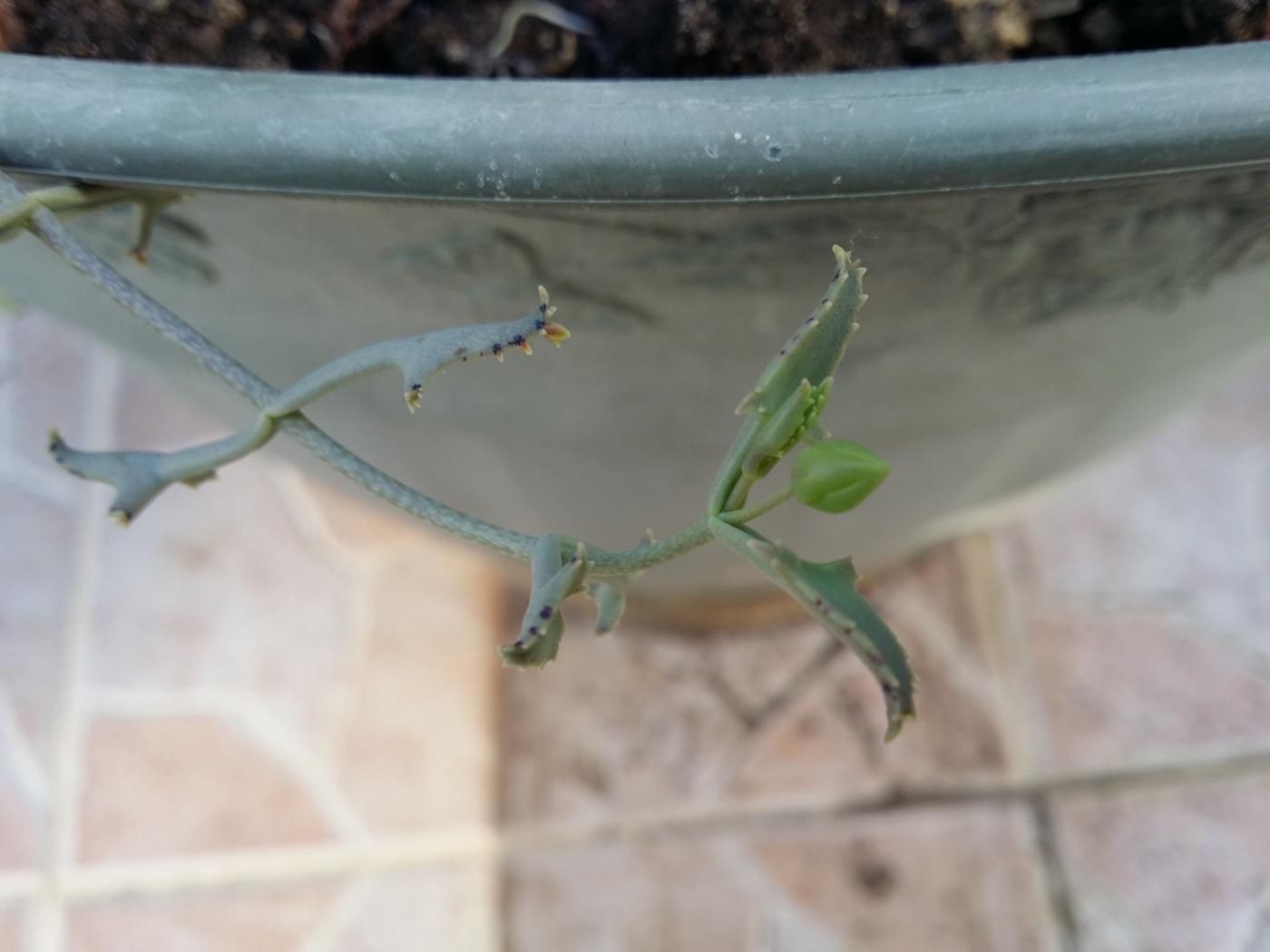
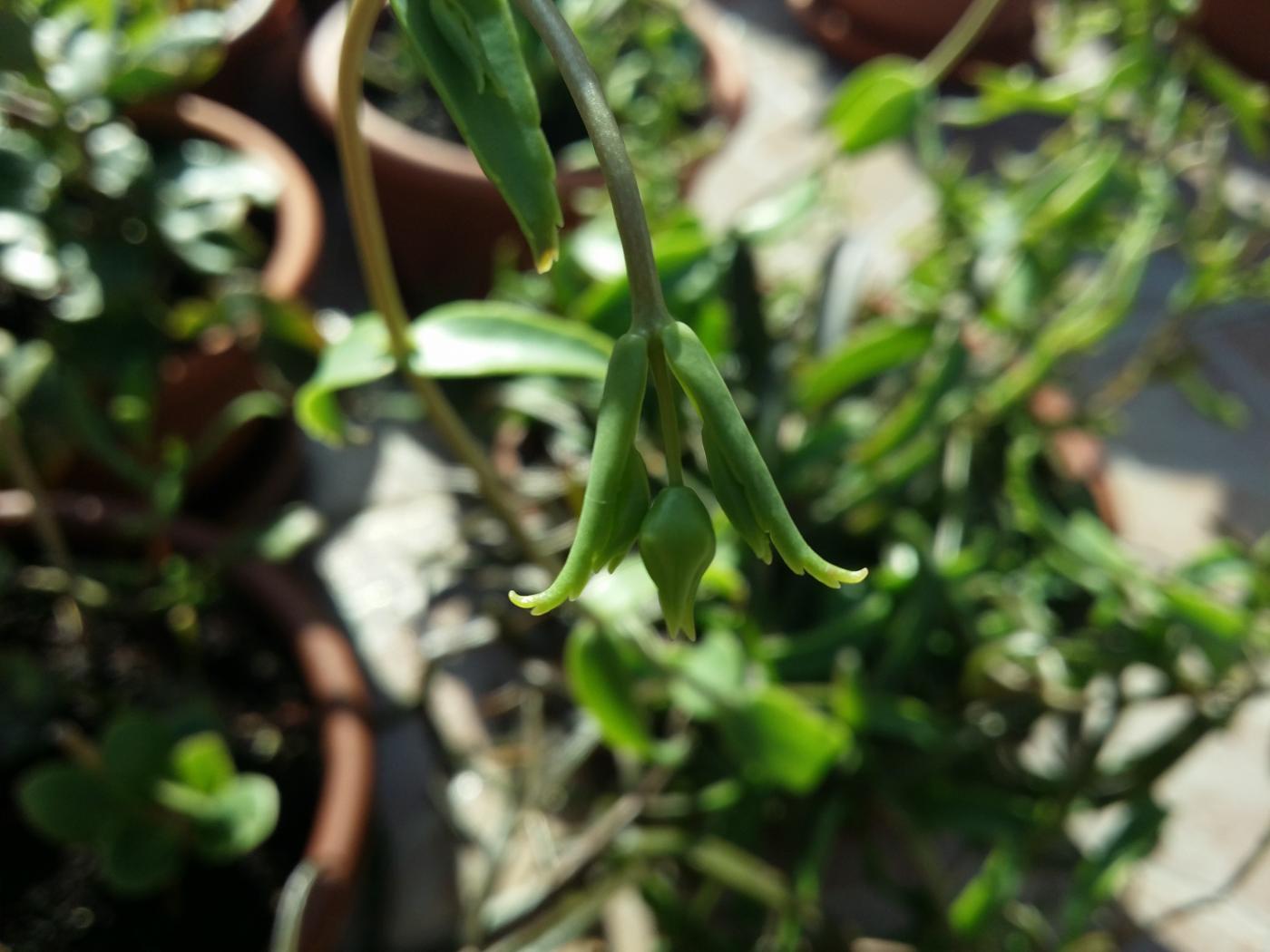
The typical K. diagremontiana:
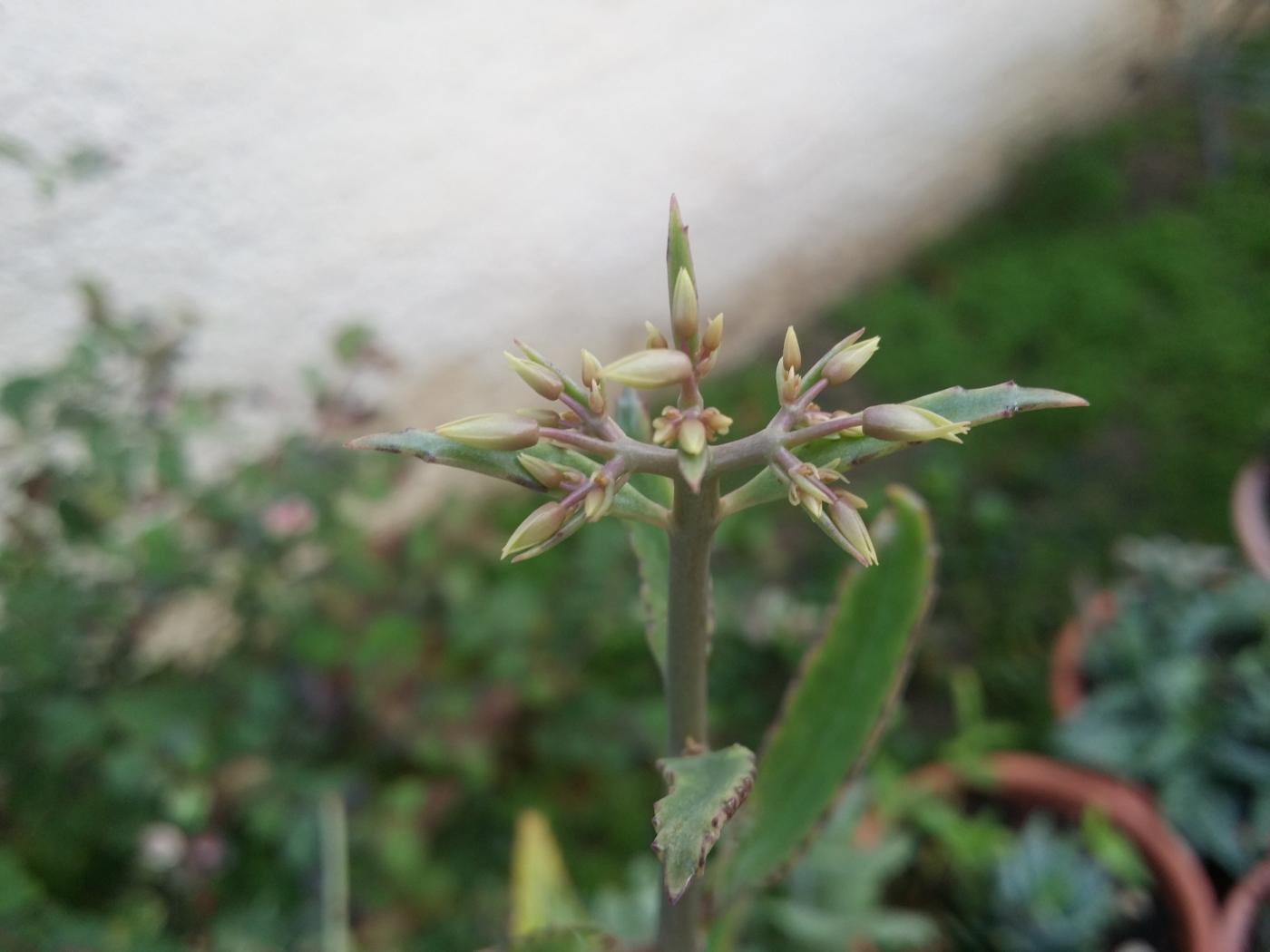
K. 'Fang':
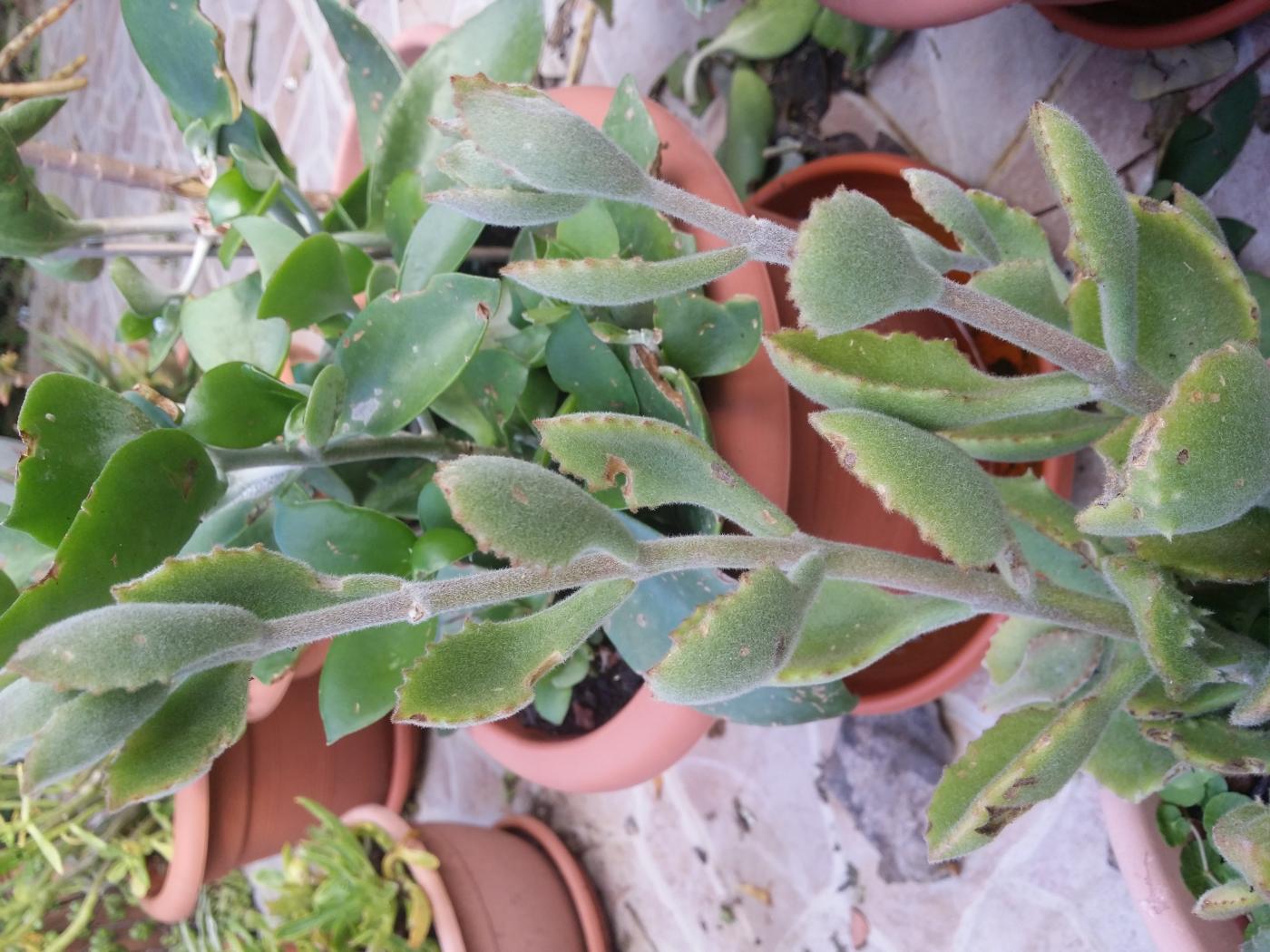
And an example of the hail damage on one of the K. × flaurantia: ![]()
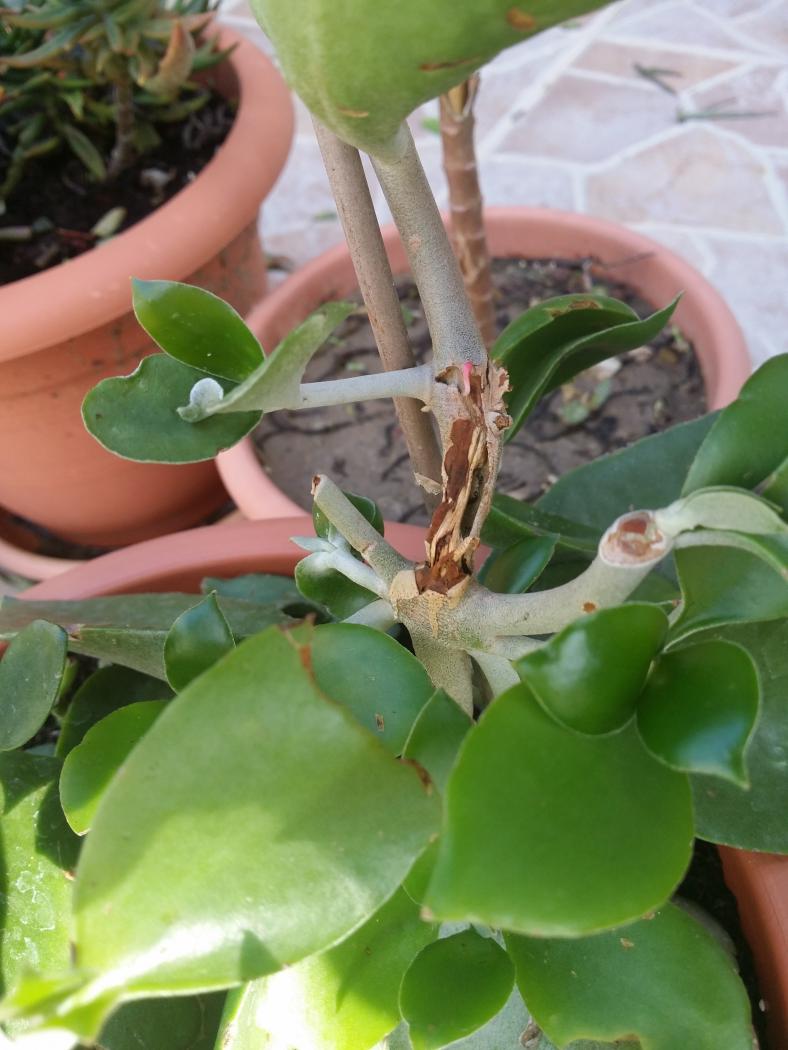
Last edited by Ronen (2014-11-25 13:47:23)
Offline
#22 2014-11-26 19:58:18
- margrit
- Administrator
- Registered: 2007-09-03
- Posts: 5,388
Re: Kalanchoe and others in my collection
Somewhere Descoings has explained that some plants never produce bulbils as long as the leaves are attached to the plant, but once they are lying on the ground, the do not hesitate to grow plantlets on their margins.
Offline
#23 2014-11-27 16:24:33
- Ronen
- Member
- Registered: 2014-03-25
- Posts: 49
Re: Kalanchoe and others in my collection
Somewhere Descoings has explained that some plants never produce bulbils as long as the leaves are attached to the plant, but once they are lying on the ground, the do not hesitate to grow plantlets on their margins.
Isn't this also true for fedtschenkoi, marnieriana, serrata, tenuiflora, most laxiflora, some rosei, some waldheimii, (the whole "Proliferae" clade), and so on? From the translation it seems that Descoings used that trait ("total absence of bulbils") to distinguish from members of the fedtschenkoi-clade ("Suffutescentes") and diagremontiana-clade ("Bulbilliferae") and to link peltigera to more basal Bryos like K. peltata - in which case the statement is not correct OR peltigera must not be able to produce margin bulbils at all (which is apparently not true).
Offline
#24 2014-11-27 20:34:20
- margrit
- Administrator
- Registered: 2007-09-03
- Posts: 5,388
Re: Kalanchoe and others in my collection
This was a casual remark, without specific reference .....
Offline
#25 2014-11-29 14:47:23
- Ronen
- Member
- Registered: 2014-03-25
- Posts: 49
Re: Kalanchoe and others in my collection
Generally it's true, but this is why I was relatively surprised - based on the description, I didn't expect it...
Below are two photos of an unidentified (probably mainland-African) Kalanchoe. It's 3 months old so no flowers yet, leaves are around 8 cm long. It reminds me of glaucescens, grandiflora, prittwitzii, but nothing seems to fit 100%... Any suspects?
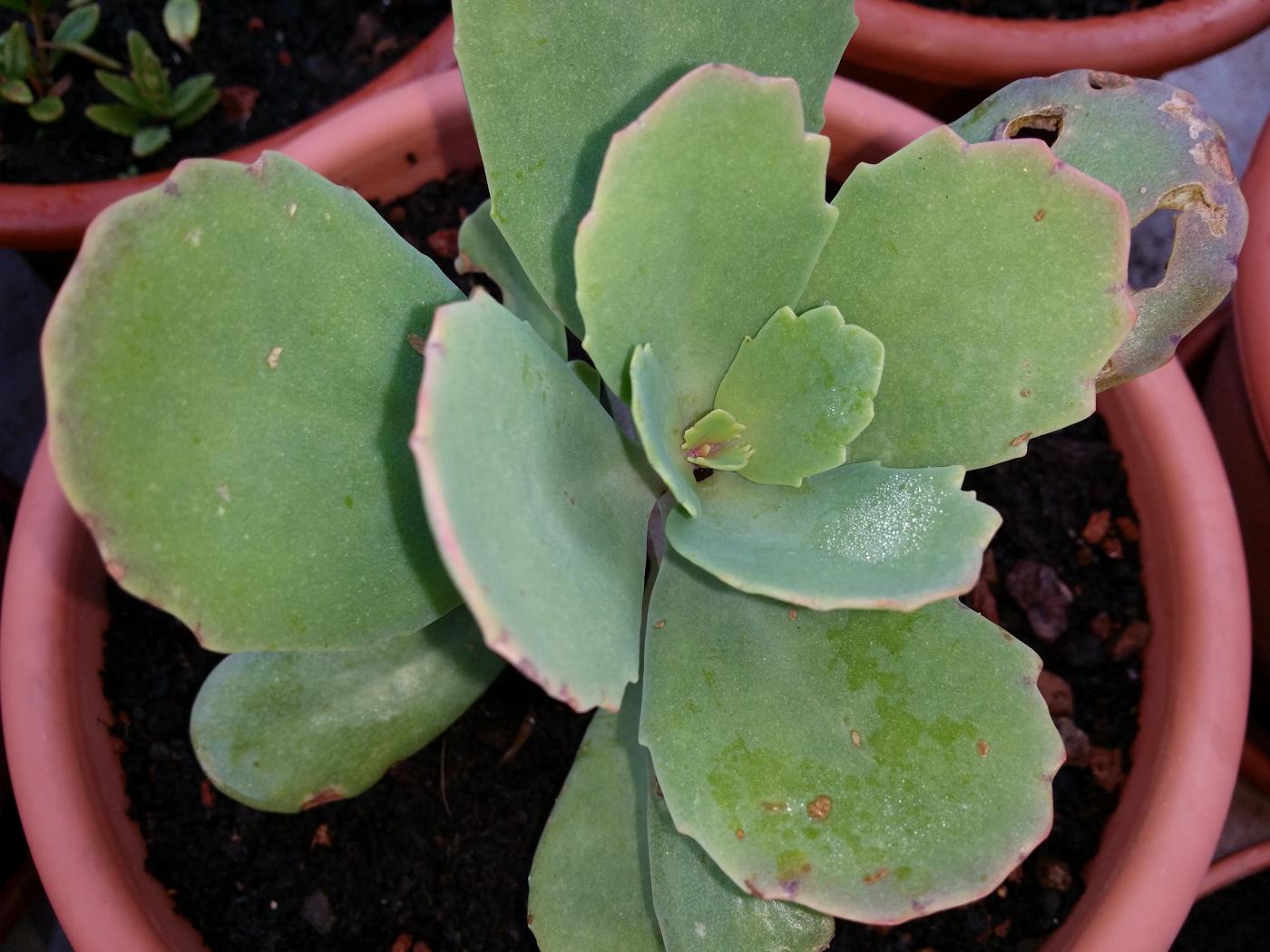
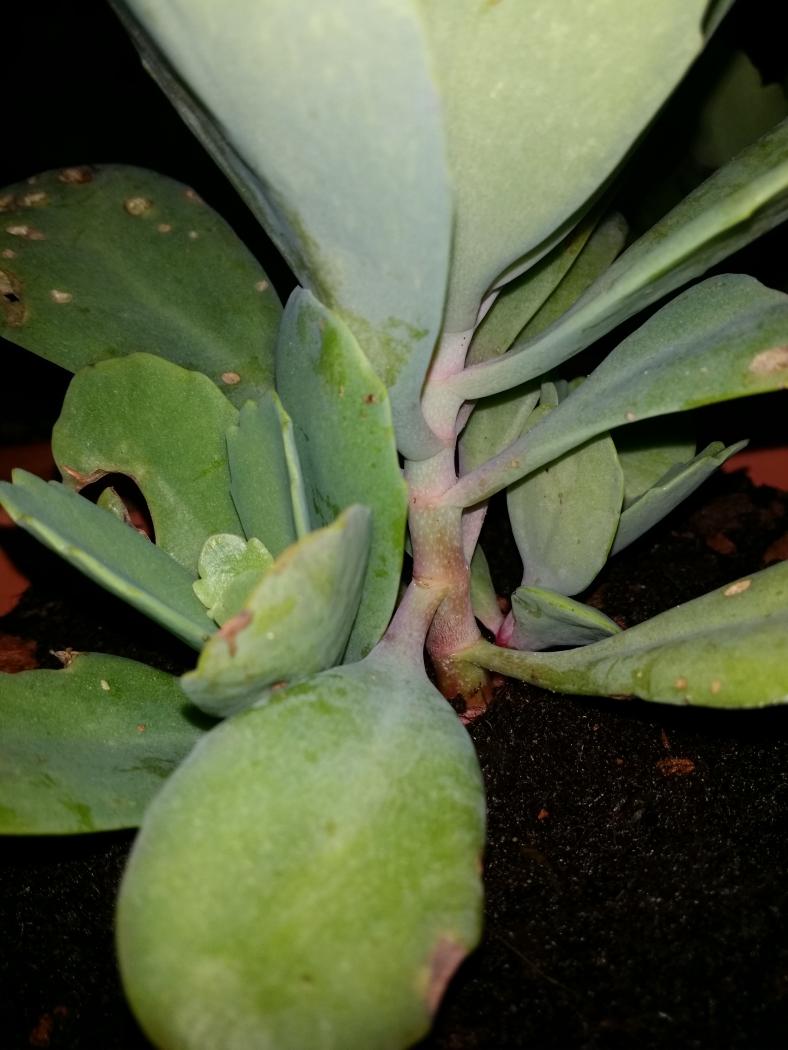
Last edited by Ronen (2014-11-30 07:00:38)
Offline